By Rick VanSickle
Canada did not discover icewine, but it has most certainly become known as the world’s benchmark for this sweet and exotic treat.
The very first “eiswein” is believed to have been created by accident in Germany in the late 1700s when freezing weather struck before the grape crop could be harvested. It would be a few centuries later before a Canadian, B.C.’s Walter Hainle, made an icewine produced in the Okanagan Valley in 1972. The German immigrant’s first icewine was the result of an early and unexpected frost, and yielded 40 litres of wine, which Hainle originally did not intend to sell, although he did so in 1978.
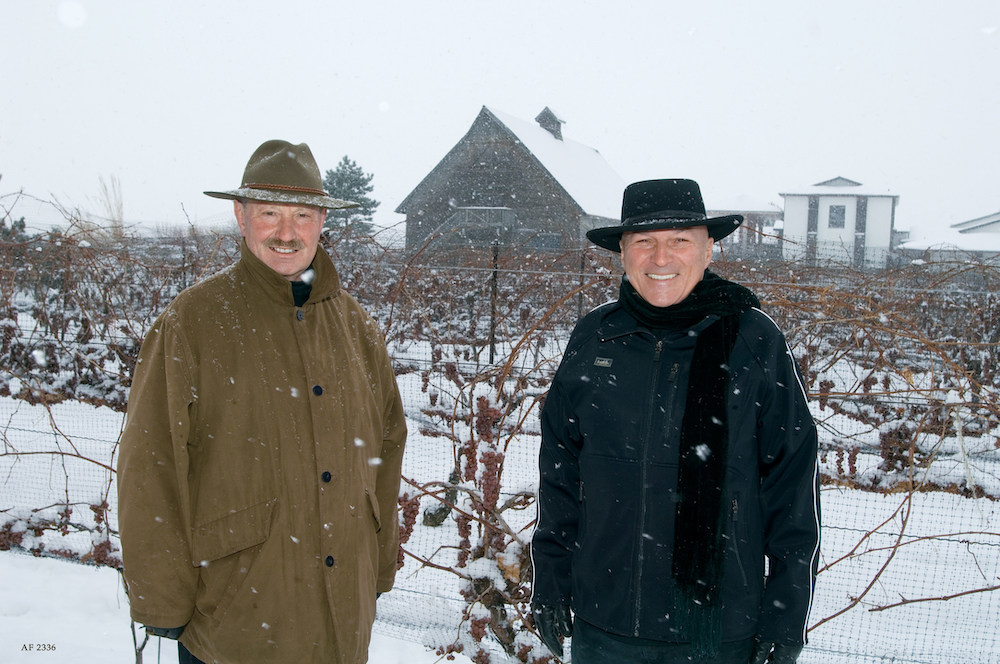
Also in this report: The cold hard facts about icewine, 24 Niagara icewines reviewed, VQA icewine cocktail seminar and pairing food with icewine.
It wouldn’t be until 1991, after Inniskillin founders Donald Ziraldo and Karl Kaiser, won the Grand prix d’Honneur at Vinexpo in France for their 1989 Inniskillin Vidal Icewine, that the world discovered Canada made wine. It was that moment that solidified Canadian icewine as the standard other wine regions could only aspire to.
That being said, all is not well for Canadian icewine makers these days. What was once a powerhouse export and highly sought out as a decadent sweet treat has suffered a severe downturn on all fronts. Exports have taken a nosedive around the world and more and more wineries are taking a pass on committing to icewine production (or have cut back severely) while the domestic market seems less than enthusiast to embrace the expensive and exotic sweet treat with any great fervour.
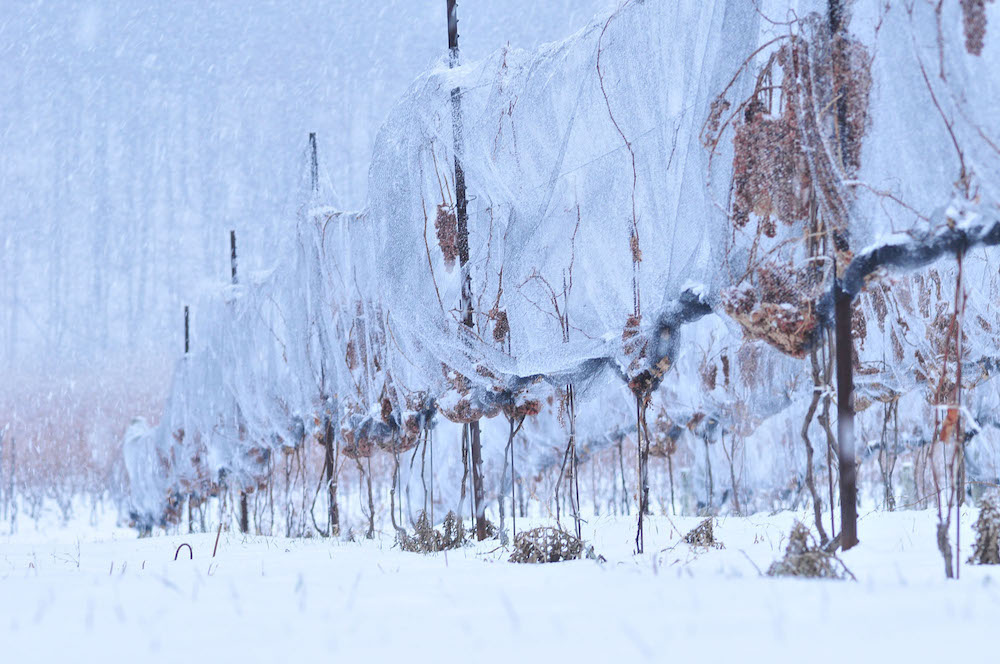
To add to the woes, the slumping market ran straight into the relentless path of a world-wide pandemic that only exasperated an already waning thirst for icewine. And, boy, did it hit hard. For two straight Januarys, COVID laid waste to the glitzy Niagara Icewine Festivals that drew thousands to taste and celebrate all things icewine and beyond. The Niagara-on-the-Lake annual icewine festivities have been cancelled along with the Jordan Winter Festival for two years in a row and left three major weekend events, with icewine as the superstar of the show, on the sidelines. And while organizers of these events are doing their best to fill the void, the fact remains, icewine culture is in danger of being cancelled unless things change in a hurry.
Wineries of Niagara-on-the-Lake association chair, Madison Vine of Andrew Peller Ltd., told Wines In Niagara that “Icewine is a Niagara-on-the-Lake staple that we take pride in and look forward to sharing with visitors during the icewine celebrations each year. As a tourism destination, we rely heavily on these off-season events that bring people to our wineries at a time where we would otherwise be very slow. However, the health and safety of our visitors, staff, and community is our top priority so the decisions we’ve had to make over the last few years are always centred around that. Many of our member wineries have curated virtual experiences, focused on online sales, and are now hosting outdoor winter experiences. As we get through this next leg of the pandemic, we’ll continue to rely on the local support that has helped keep many of our doors open and we’ll continue to look forward to when we can host our events again.”
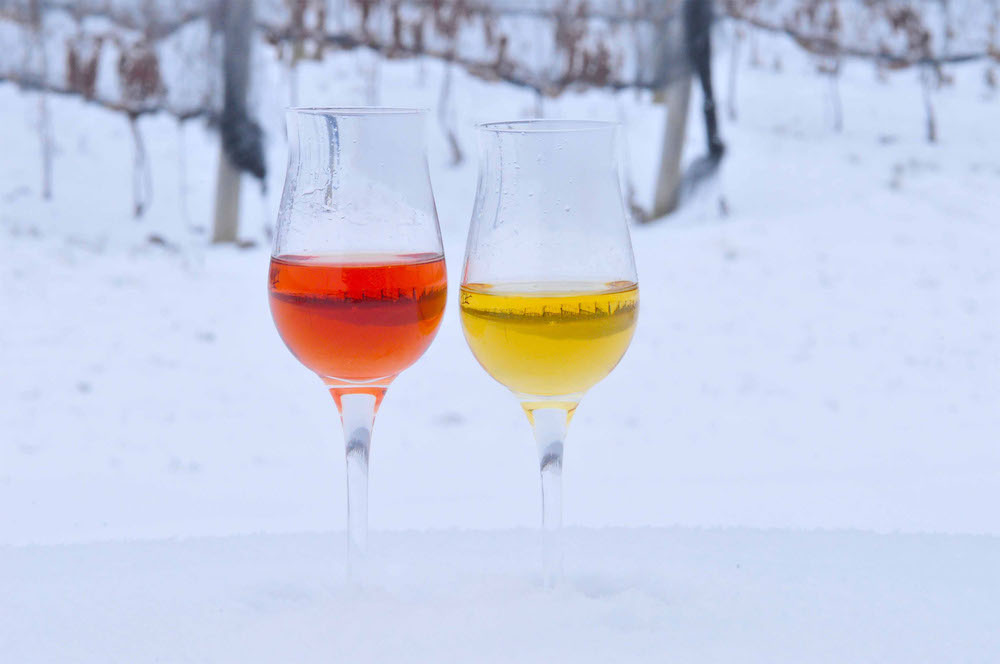
No one knows for sure when that will be, and the downturn is reflected in some disappointing export statistics (Canada, up until now, exports the vast majority of the icewine it produces). But it can’t all be blamed on COVID.
Also see: Icewine needs a big hug, published here a year ago.
According to stats provided by Janet Dorozynski, federal trade commissioner for Canadian wine, beer and spirits, the decline for icewine exports started to tank in 2020 before COVID was on the world radar. It plummeted to $10.5 million in 2020 from a high of nearly $25 million in 2017. Only 137,000 litres of icewine were produced in 2020, the lowest amount ever, from a high of 336,000 L in 2016. And it only got slightly better in 2021, with $10.7 million (up to October) exported and 119,000 litres produced (up to October).
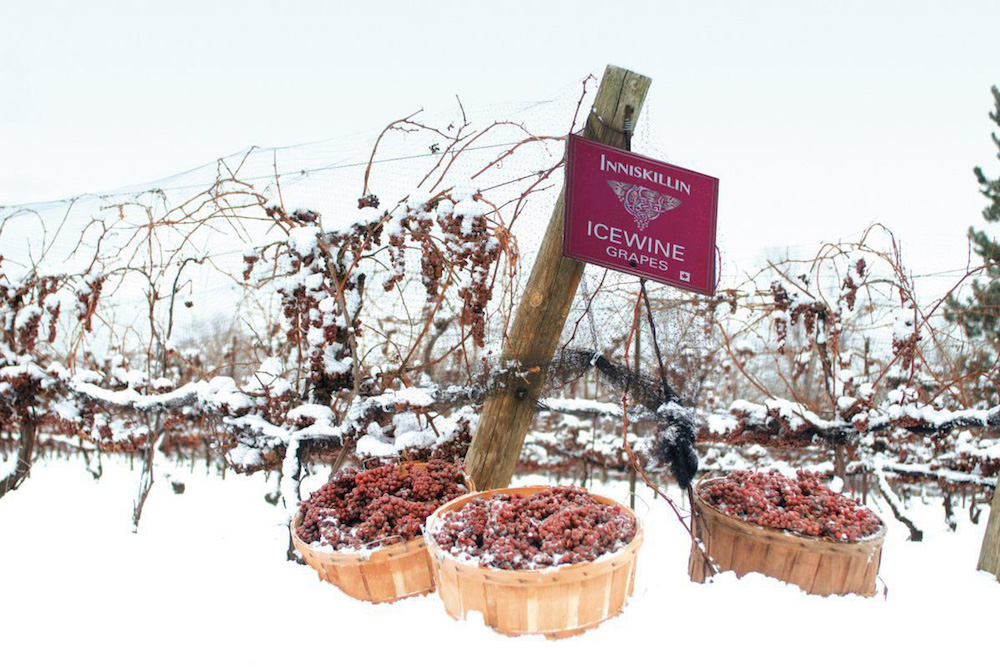
To put that into perspective, last winter 46 vineyards registered the equivalent of 1,068 metric tons of icewine grapes, down significantly from 5,789 tonnes the year before and setting a record low for preregistrations since VQA Ontario began regulating the harvest. In 2021 there are 1,952 tonnes netted for icewine, up slightly from the year before, but we don’t yet know how much of that will be realized when it’s all said and done due to the health of the harvest following a tricky vintage in Niagara.
Here are the export dollars and volume produced from 100% VQA Canadian icewine over the last six years: $19.3 M in 2016 (336,000 L), $24.7 M in 2017 (298,000 L), $22.3 M in 2018 (237,000 L), $18.7 M in 2019 (205,000 L), $10.5 M in 2020 (137,000 L) and $10.7 M in 2021 (119,000 L) up to Oct.
There isn’t one clear reason for the drop in icewine sales and production other than the near complete abandonment of China as Canada’s No. 1 destination for icewine and waning interest from the No. 2 importer, the U.S. Sales to China went from a high of $11.5 million 2017 to a low of $3.2 M in 2021 (up to Oct.). Canada’s second biggest market, the U.S., went from a high of $7.8 M in 2018 to a low of $953,000 in 2020.
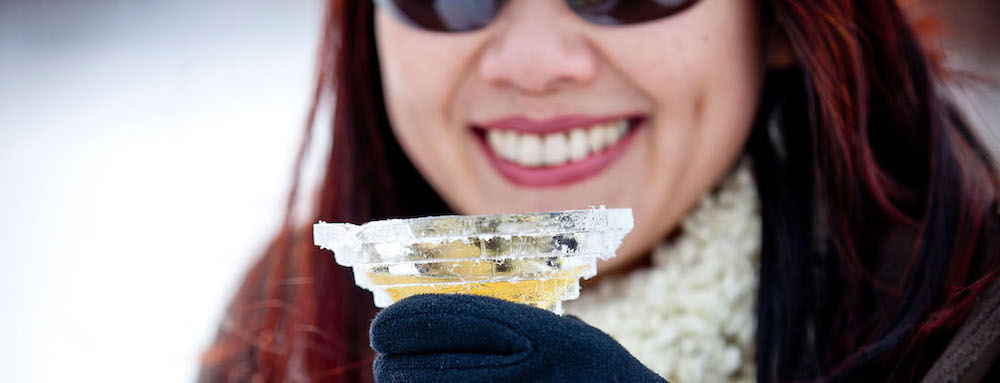
There are myriad reasons for the sad situation for Canada’s most famous wine — politics with China and COVID being at the top of the list — but as Dorozynski points out, “the decline has been happening even prior to COVID and as you know, there are more wineries, both within and outside of Ontario, that no longer make Icewine and are focusing on wine other than Icewine in the export market.”
The wines Canadian wineries are largely focused on when they travel to international trade shows recently (when it was safe to do so) are table wines, not icewines, preferring to establish a market that moves away from the sweet wines.
“From the distributor’s lists that I have seen in various markets, while there are a number of producers that continue to focus on and specialize in icewine, there appears to be more dry and table wines, both red and white, along with sparkling, in international markets,” said Dorozynski.
A cold harvest
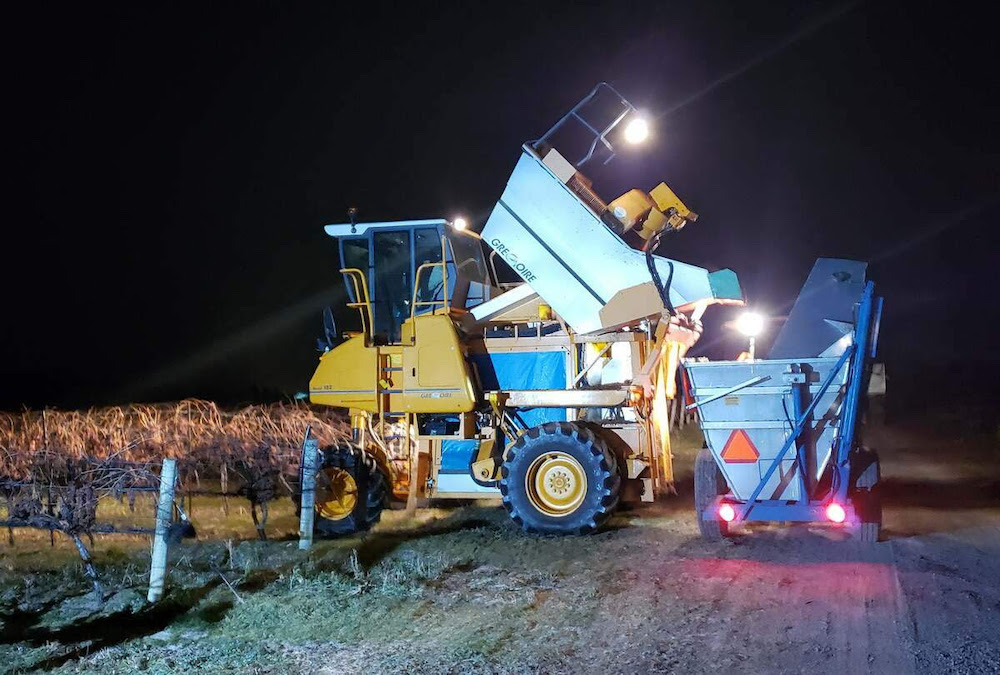
Icewine picking began last week in Niagara, and it was greeted, oddly, with little fanfare. In the past there were news releases and plenty of social media buzz with photos of icewine pickers braving the cold to bring in those frozen grapes to be crushed into a sweet nectar and shipped around the world. But with fewer and fewer wineries committing to icewine production, the excitement just wasn’t there. Sue-Ann Staff speaks for many when she says her namesake winery took a pass on icewine production for the first time and blames a “depressed luxury market, lower than normal exports and enough in inventory.” Add in another year with no icewine festivals, and how can you blame wineries for bowing out of making a product they are having trouble selling?
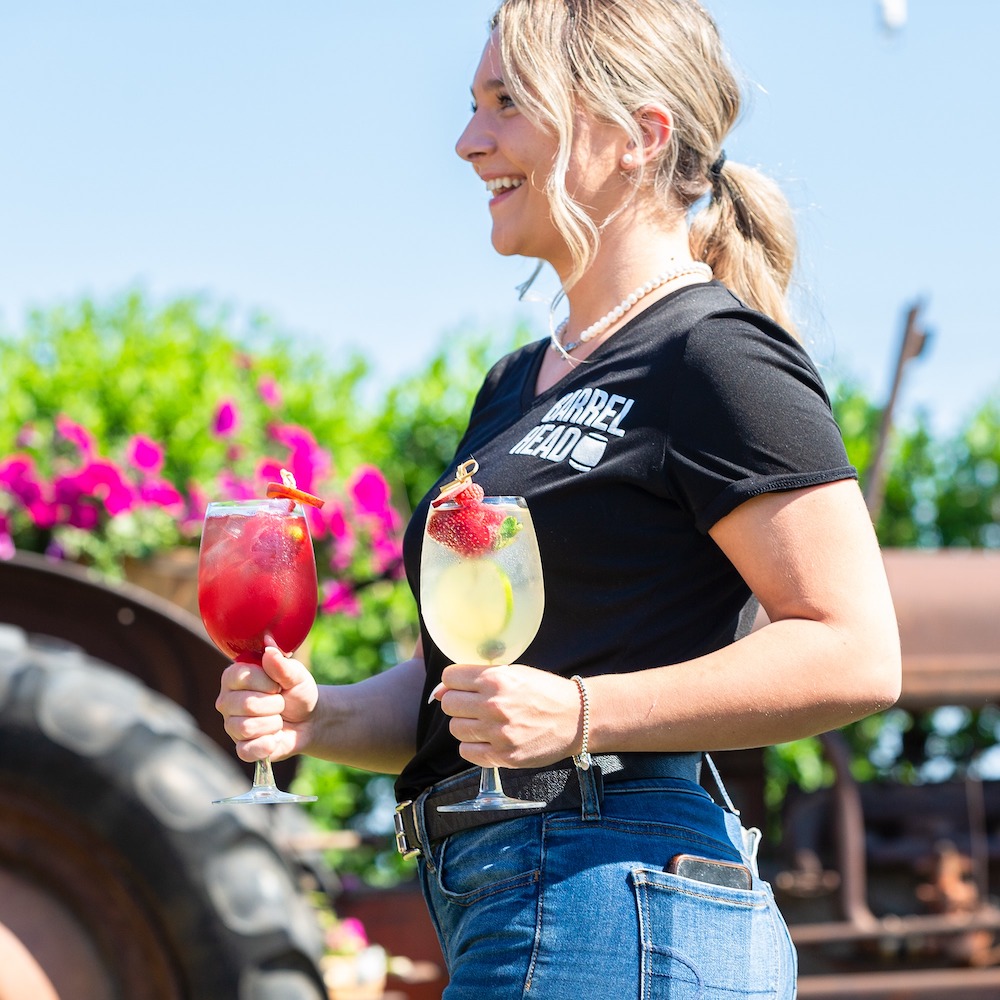
Pillitteri Estates Winery in Niagara-on-the-Lake, one of Canada’s largest icewine producers, joined a few wineries that picked grapes on Jan. 10 (above photo) when temperatures reached -15 C. Director of viticulture and the man leading the harvest for Pillitteri, Jamie Slingerland says: “Some years are colder than others, the last few harvests were right on that -8 C to -9 C cusp (the legal minimum temperature to harvest VQA icewine), but this year was a bitterly cold one.” Harvest continued into the morning for 16 straight hours, and it was a smaller harvest than in past years “due to the lack of international tourism, the main market for Canadian icewine sales.”
Pillitteri is the official wine partner of the Canadian Olympic Team, producing a Team Canada Icewine (reviewed below in this report) along with red and white table wines. The winery was one of the first to rebound from the declining icewine market during the pandemic and found a re-purposing for icewines by introducing delicious summer icewine cocktails that are now a staple at its year-round BarrelHead Bistro, constructed last summer at the estate.
A new path for icewine
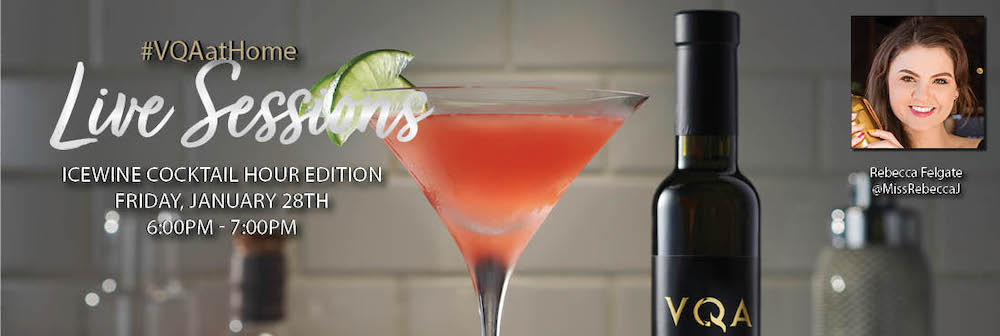
It’s an idea that has sparked renewed interest in icewine as producers look inward at its own domestic market and younger consumers more open to exploring icewine as a base for cocktails.
Wine Country Ontario has embraced January as the month to celebrate all things icewine despite the in-person festivals being cancelled. With the icewine harvest officially underway, the winery association invites consumers to “explore the versatility of this quintessentially Canadian wine.”
As part of their #VQAatHome Live Sessions, Wine Country Ontario has turned to Toronto-based cocktail lover Rebecca Felgate to take consumers through some “cool” twists on three classic icewine cocktail recipes.
The Live Session is taking place virtually on Friday, Jan. 28, at 6 p.m. Felgate will show you how to put a spin on classic cocktail recipes, by incorporating Ontario’s liquid gold, VQA icewine. Click here to register for the free event.
The three cocktails
VQA Icewine Cosmopolitan
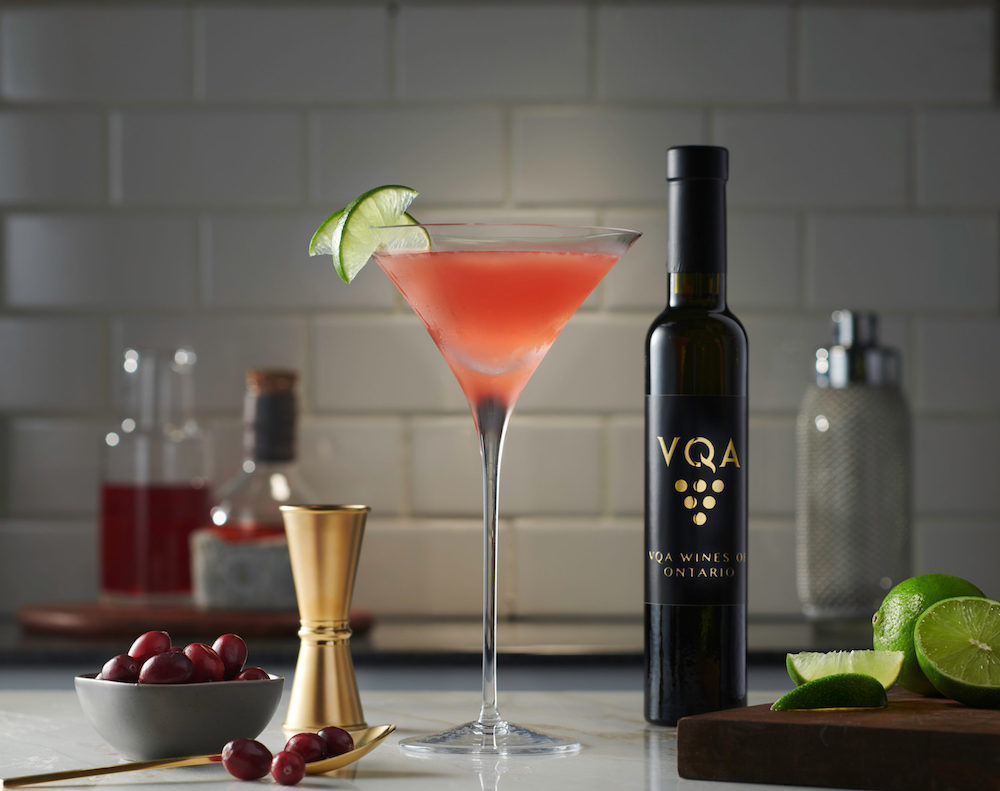
• 1 oz VQA Vidal or Riesling icewine
• 1 oz premium vodka
• ½ oz Grand Marnier
• 1 ½ oz Cranberry juice
• ½ oz lime juice
• Citrus peel for garnish
Pour VQA Icewine, vodka, Grand Marnier, cranberry and lime juice into a cocktail shaker filled with ice. Shake vigorously, then strain into a chilled martini glass and garnish with a citrus peel.
VQA Icewine 76
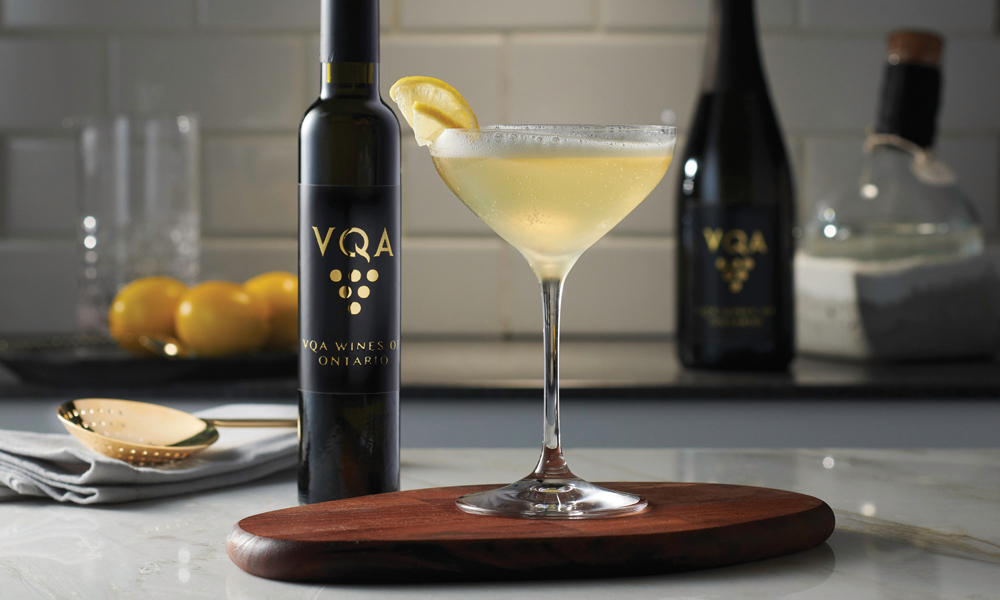
• 1 oz VQA Riesling or Vidal icewine
• 1 oz premium vodka
• ½ oz lemon juice
• 3 oz VQA Sparkling wine
• Citrus peel for garnish
Pour VQA Icewine, vodka and lemon juice over ice in a cocktail mixer or shaker. Stir gently, strain into a chilled coupe glass and top with VQA Sparkling wine. Garnish with a lemon twist.
VQA Red Icicle

• 1½ oz VQA Vidal Icewine
• 2 oz pomegranate juice
• 2 oz ginger ale
• Pomegranate seeds for garnish
To a cocktail shaker filled with ice, add bourbon, maple syrup, and VQA Icewine. Stir and strain into a rocks glass with ice. Garnish with a maraschino cherry
Go here for videos on those icewine cocktails and others.
Additionally, Wine Country Ontario continues to encourage people to try icewine with different foods under the themes of Sweet, Savoury and Spicy. Go here for those perfect pairings.
Staying in the game

Meanwhile, the Wineries of Niagara-on-the-Lake association, has had to cancel all in-person icewine events for the second January in a row due to “an alarming surge in COVID-19 case numbers and hospitalizations across the province.”
For the month of January, association members are offering savings on classic icewines delivered directly to your door as well as exceptional wines paired with icewine culinary delights or recipes. Go here for more details.
Wines In Niagara had a chance to taste one of the icewine cocktail kits Pillitteri is offering called the BarrelHead Cocktail, available to order here.
The kit provides you with the ingredients to make your own Moscow mule icewine cocktail (vodka excluded)
Pillitteri Moscow Mule
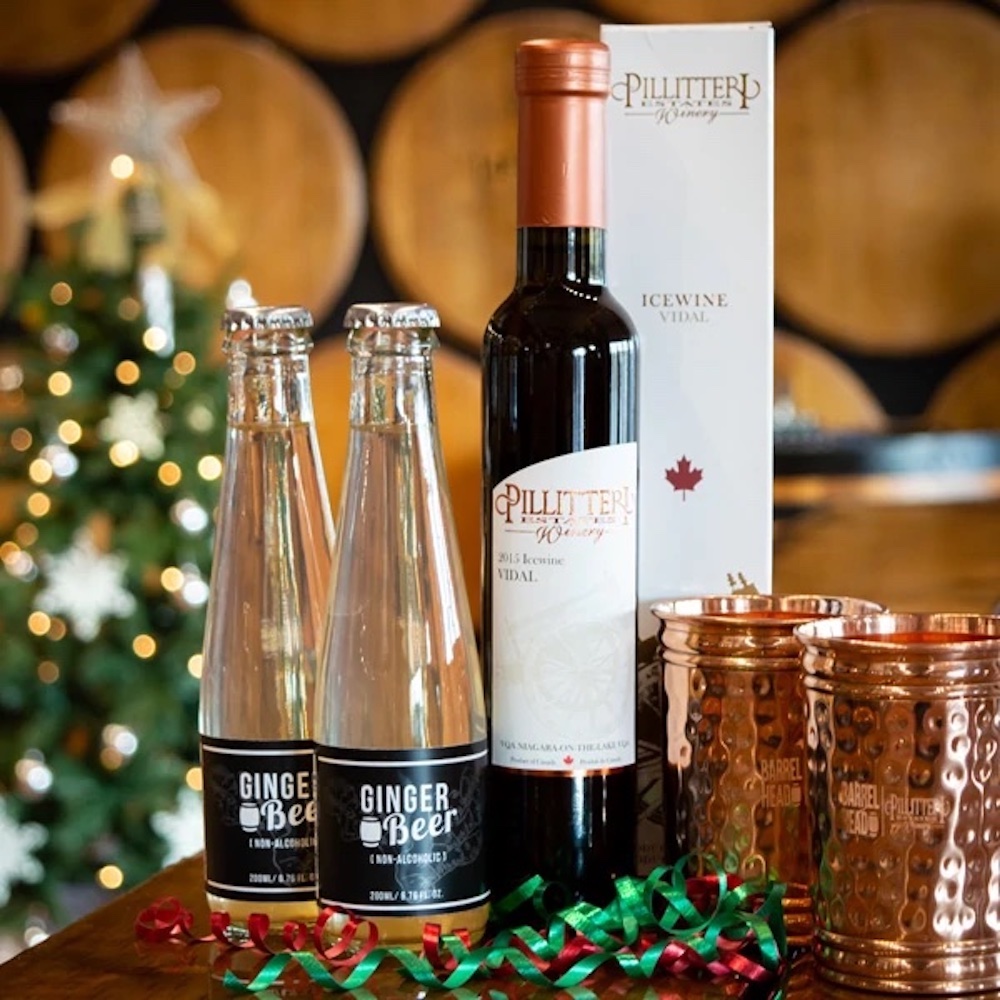
Kit includes …
• 2 Copper BarrelHead Moscow Mule mugs
• 2 BarrelHead ginger beer bottles (non-alcoholic)
• 1 bottle Vidal Icewine (200ml)
Recipe (ingredients for one cocktail):
• 30 ml VQA Vidal Icewine
• 200 ml BarrelHead ginger beer
• 45 ml of your fav vodka or gin
• 1 lime wedge
• 3 to 5 mint leaves (more if you’re feeling minty fresh)
Directions:
• Muddle lime wedge and mint leaves in tumbler.
• Add your favourite vodka or gin, VQA Vidal icewine.
• Add ice and shake it like you’re mad at it.
• Strain it over ice in your cool new BarrelHead copper cup
• Top with that delicious BarrelHead ginger beer
• A little mint and lime garnish because you fancy
• Share on social because if it’s not on social media, did you even do it?
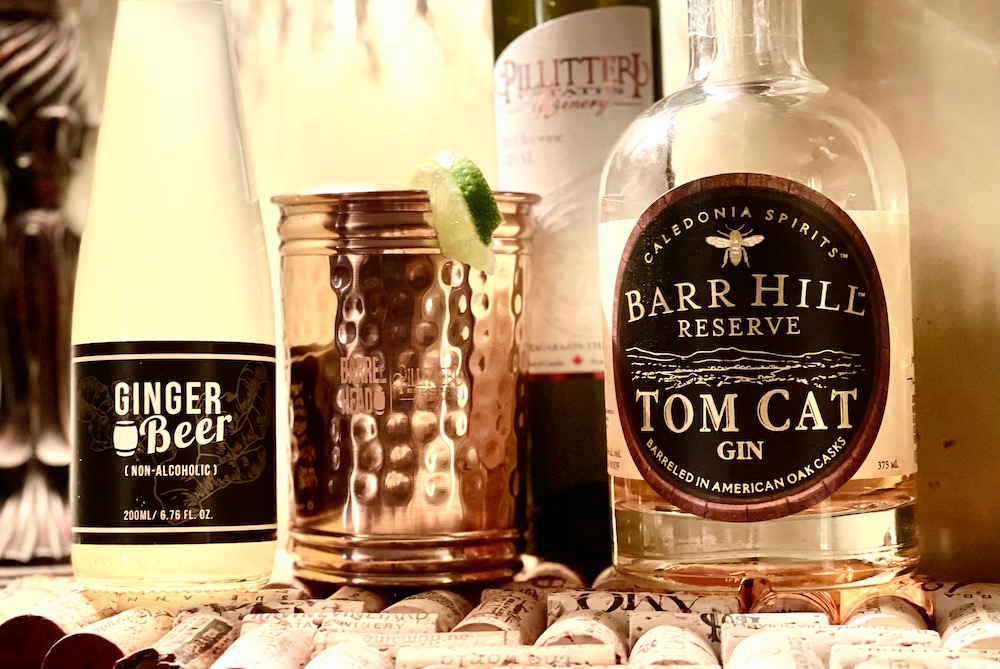
I prepared the kit I received as directed and it was simply delicious. The ginger beer brought some spice to the exquisite icewine and all those tropical fruits, and the muddled lime offered a nice zesty lift to the cocktail. I didn’t have any mint on hand, but I used a gin that was chock full of botanicals that brought a further dimension to the overall drink. I can highly recommend it.
Did you know …
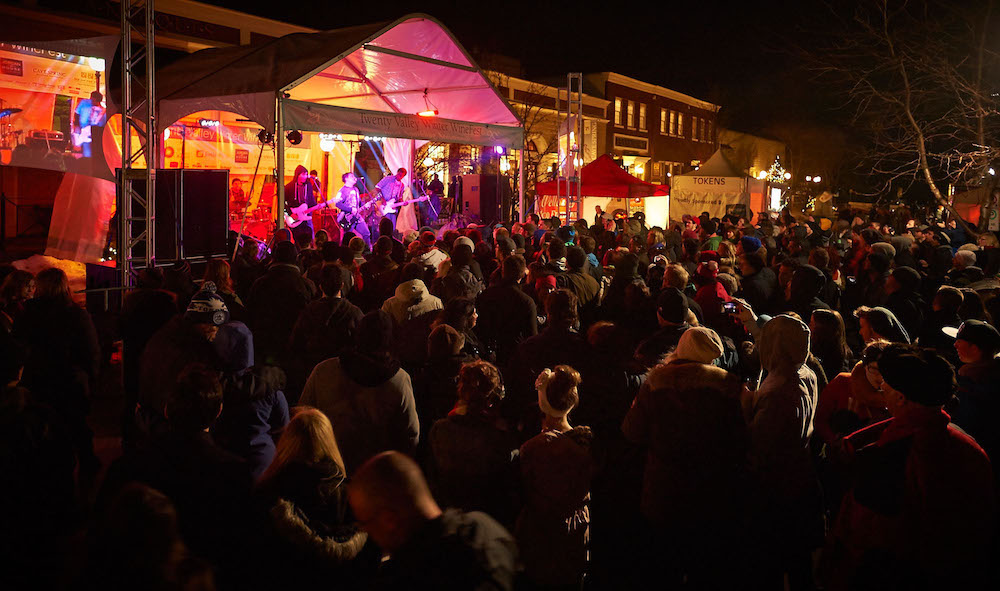
• Ontario produces over 95% of Canada’s icewine.
• The naturally dehydrated and frozen grapes are typically harvested between December and February.
• It must be -8 C or colder for both picking and pressing of icewine grapes.
• Vidal, Riesling and Cabernet Franc are the most common varieties.
• Ontario has been producing icewine every year for over 35 years.
Learn more about Ontario VQA icewine on the Wine Country Ontario website here.
Icewine, glorious icewine
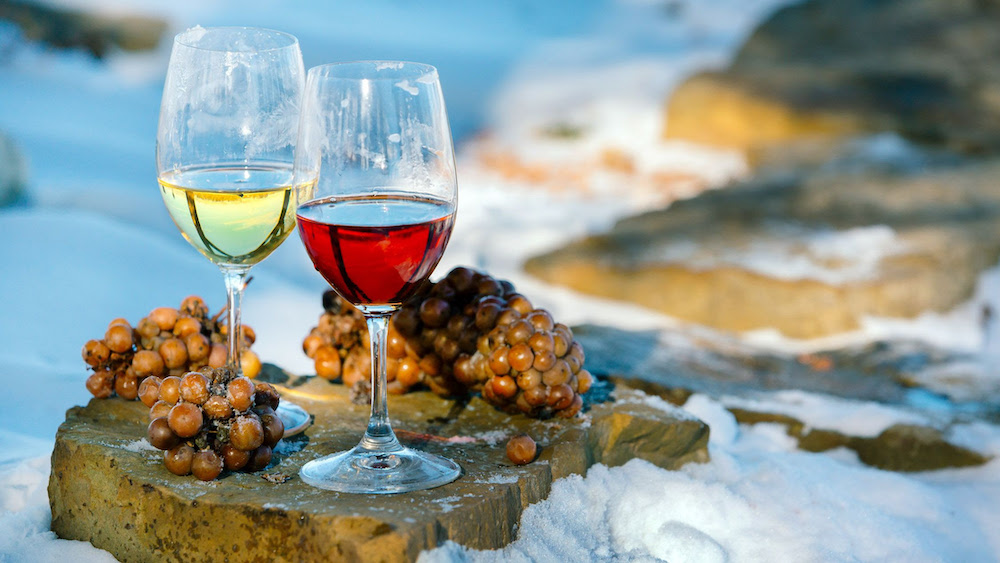
There is no question that icewine put Canada firmly on the world wine map. From the very first commercially produced icewine made by Kaiser and Ziraldo at Inniskillin in 1984, the world fell in love with this luscious treat that’s renowned for its layers of sweet tropical and citrus fruit flavours and aromas ranging from mango and peach to lemon and lychee. The red icewines, gaining in popularity, show compote red berries, ripe plums and crème de cassis.
Icewine is truly a natural wonder and extreme winemaking at its best with styles that range from unoaked to slightly oaked to sparkling and crafted from myriad grapes grown in Ontario and B.C.
It is — like or not — what Canada does truly better than any other variety or style of wine you can think of. Yes, we make world-class Chardonnay, Pinot Noir, Cabernet Franc, Riesling, Gamay and sparkling wines (and more), but literally NO ONE can produce true icewine under strict, regulated standards like Canada can. And while I applaud all the efforts going into making it more accessible to different demographics just entering the category, I truly hope it leads to icewine being appreciated in its purest form. Our country needs to recover from the slump it is in in terms of icewine.
Two dozen Niagara icewines to buy now
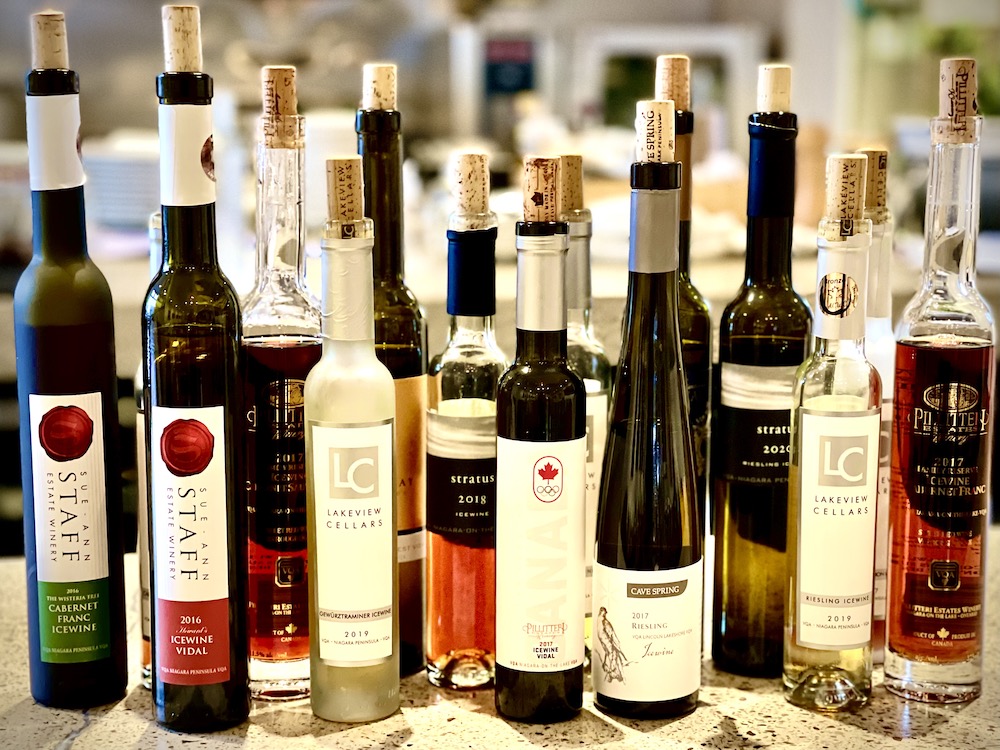
I tasted two dozen icewines (and one late harvest wine) across the full spectrum of styles and varieties in the past week or so for this report. Do yourself a huge favour, take a local winery up on the many deals they are now offering on icewine this month. Join in the icewine cocktail seminar later this week. Embrace this Canadian treat. And make sure to put some in the cellar to see how well it matures. You will not be disappointed.
Here is what I tasted and liked (in alphabetical order).
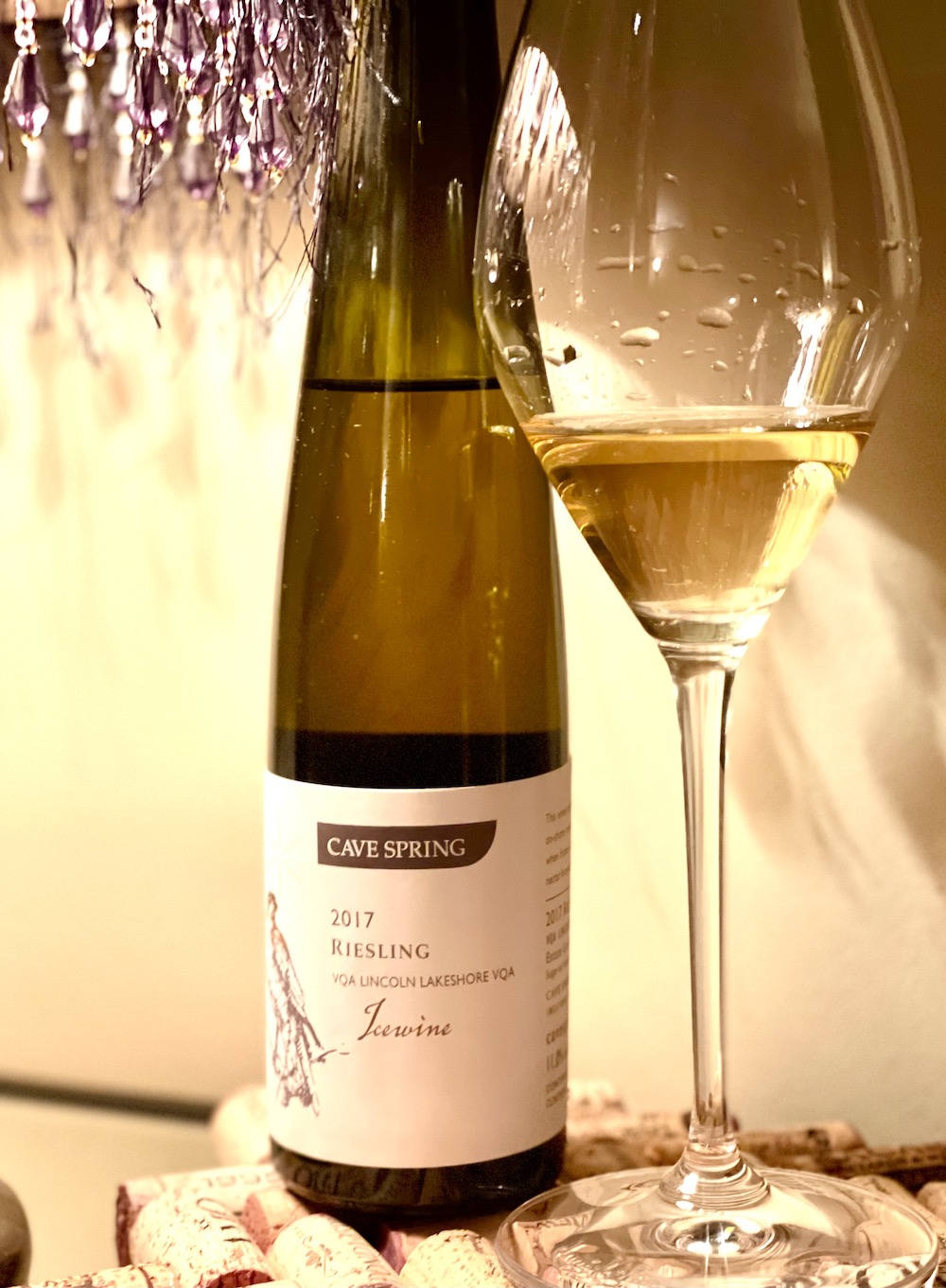
Cave Spring Riesling Icewine 2017 ($50 for 375 mL, 93 points) — The nose shows lovely apricot tart, sweet pear, baked apple, peach pie, lanolin, tangerine and mulled citrus notes. It’s juicy and honey sweet on the palate with compoted orchard fruits, ginger and lime cordial with a zingy, lifted finish. Lovely icewine that will age beautifully for 5-10 years.
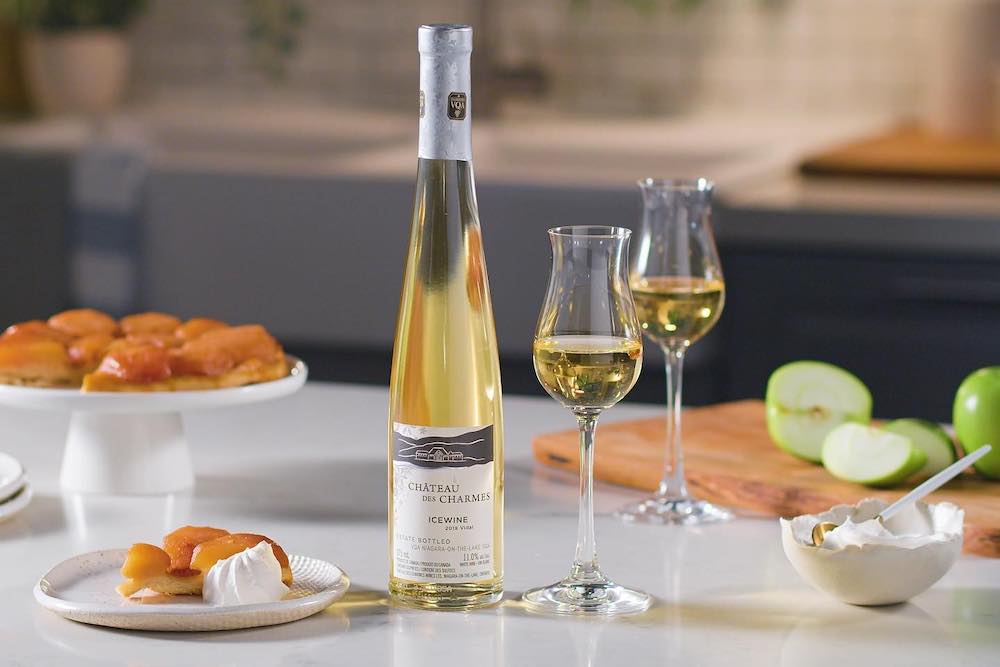
Chateau des Charmes Vidal Icewine 2019 ($48 for 375 mL, 91 points) — This has a deep and layered nose of sweet mango, papaya and sliced pineapple with pear nectar, apricot and peach for good measure. It’s dripping in wild honey on the palate with compoted tropical fruits, peach tart and jammy apricot with a velvety texture through the juicy finish. Can cellar 5+ years.
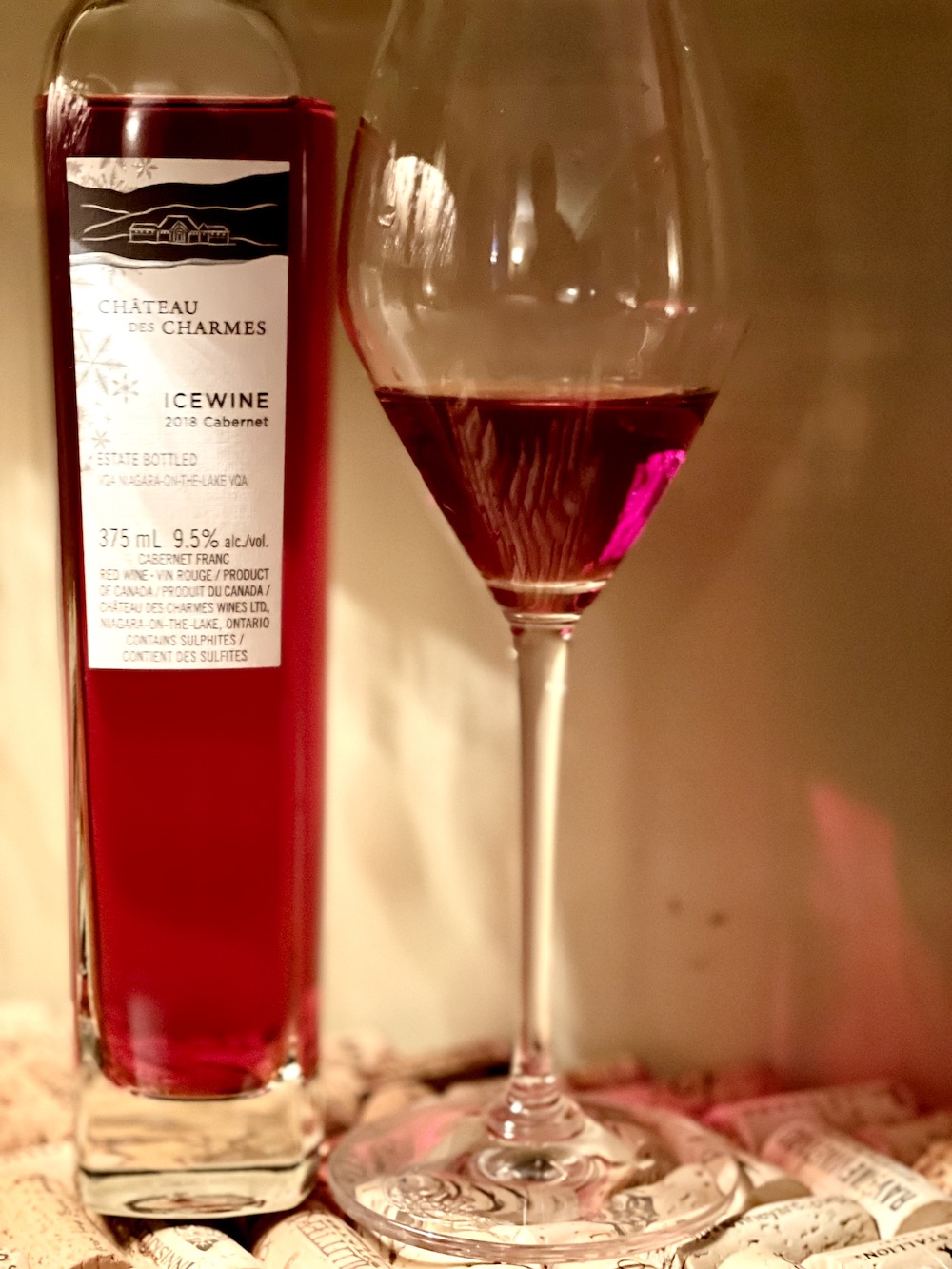
Chateau des Charmes Cabernet Icewine 2018 ($80 for 375 mL, released soon, 94 points) — This rare Cabernet Sauvignon/Cabernet Franc red icewine is presented in a gorgeous four-sided, tapered bottle and has a bold crimson colour in the glass. The 2016 vintage is currently available with this 2018 version being released shortly. What a beautiful icewine! The nose shows a heady mix of sweet black raspberries, strawberry tart and cassis with red and black currant jam. It has a viscous texture on the palate with compoted red berries, black currant preserves and melted dark chocolate with baked brown sugar on a lifted, long and luxurious finish that is sweet, but not cloying at all. Would love to see this with 10 years of age.
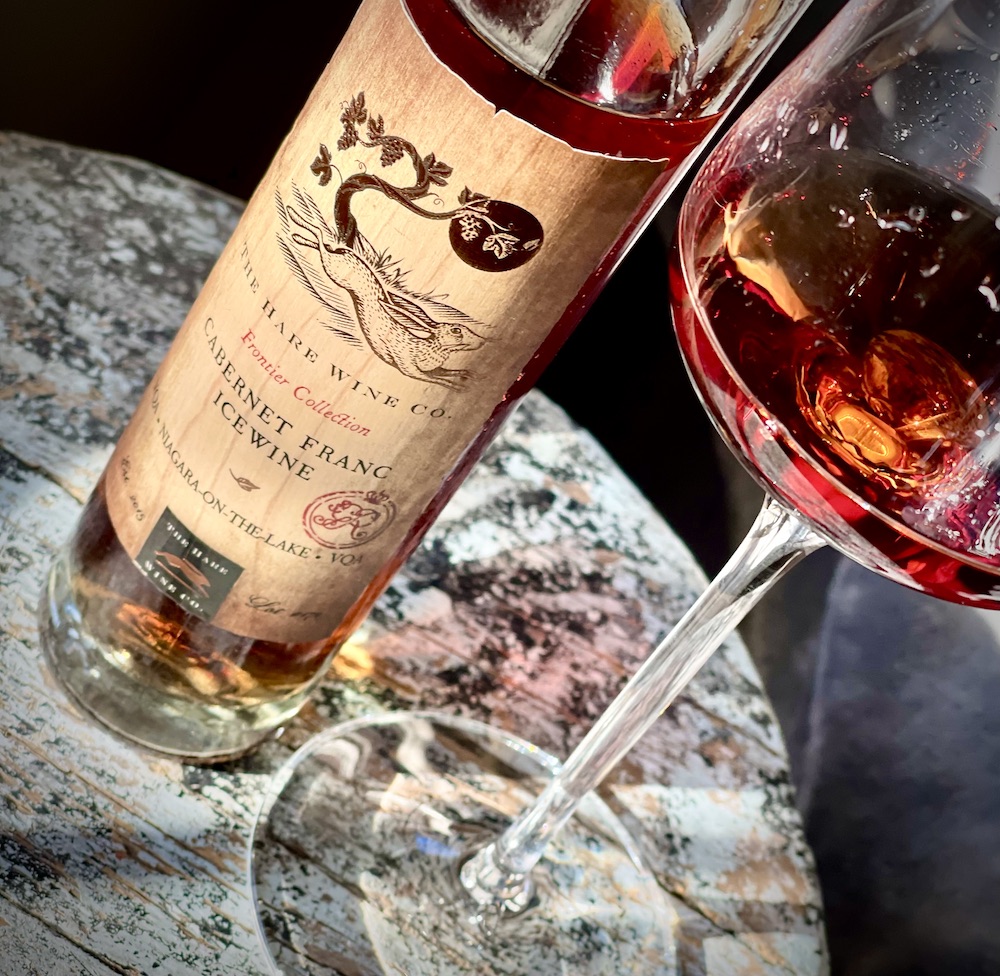
Hare Wine Co. Frontier Collection Cabernet Franc Icewine 2017 ($45 for 200 mL, 93 points) — Wow, what a penetrating nose of highly extracted sweet red berries, cassis, baked brown sugar and subtle spice notes. It’s rich and unctuous on the palate with raspberry compote, strawberry tart, dark chocolate and cherry kirsch notes. This lovely red icewine has a velvety texture and the caressing finish is bolstered by mouth-watering acidity. Can age 7+ years for further development.
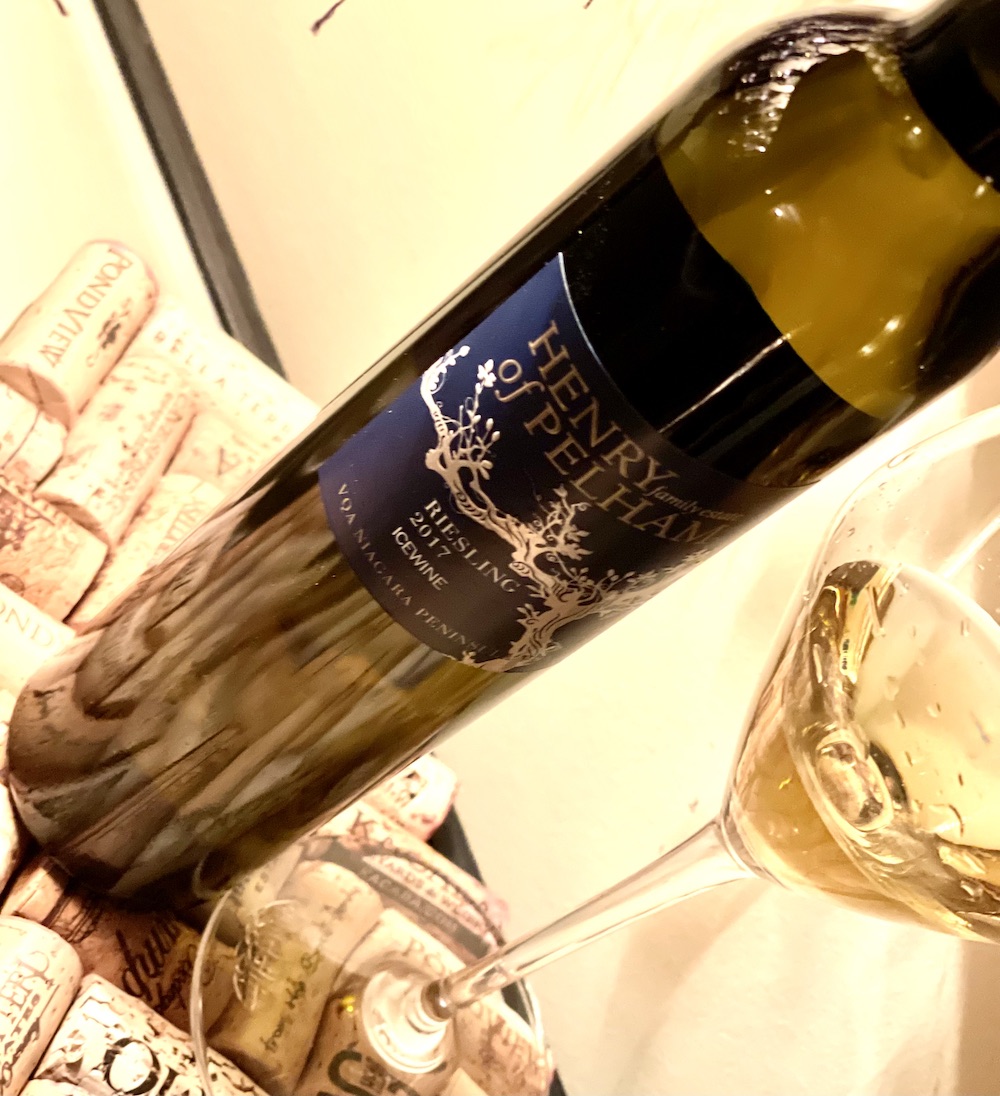
Henry of Pelham Riesling Icewine 2017 ($50 for 375 mL, 93 points) — Such an enticing nose of plump and sweet peach, apricot, pear and nectarine with subtle lemon-lime marmalade notes. It shows super-charged wild honey notes on the palate with honeydew melon, peach pie, fruit punch, apricot tart and mouth-watering acidity keeping it all lively on the finish. Can cellar 10+ years.
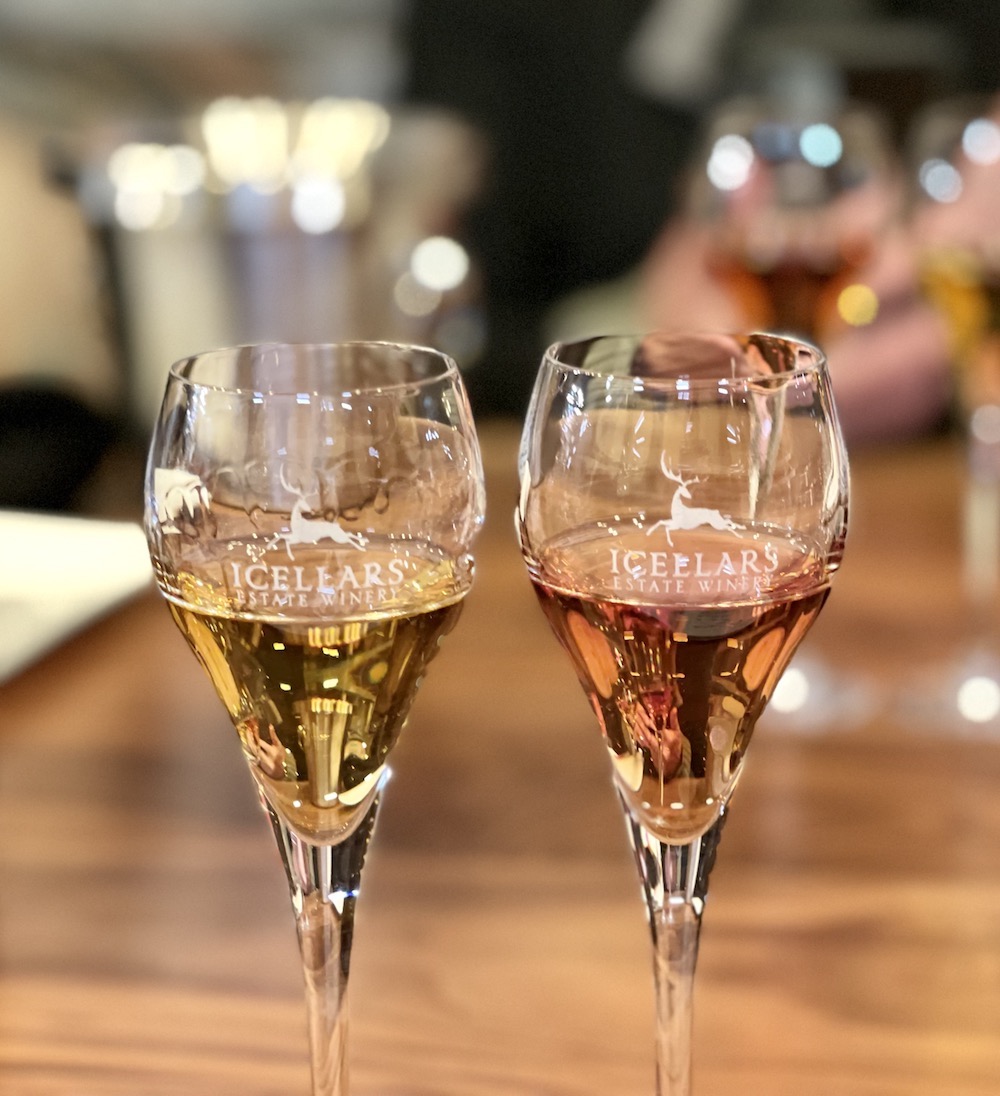
Icellars Cabernet Franc Icewine 2019 ($48 for 200 mL, 92 points) — After getting frustrated with consumers thinking the name of the winery was related to icewine, Adnan Icel finally relented and decided it was time to make one to appease those who ventured to Icellars in search of that sweet style of wine. He says he will only make it every three years or so and the 2016 Riesling version (poured along with this and previously reviewed) was followed by this 2019 Cab Franc version. This is the first estate icewine and was finished with 153 g/l of residual sugar and a whopping 13.6% abv, rather on the high side for icewine. It shows a rich mix of compoted red berries, herbs and a touch of crème de cassis. It’s luxurious on the palate with mulled red berries, pronounced raspberry jam notes in an elegant and somewhat fresh (for an icewine) style that will benefit from aging.
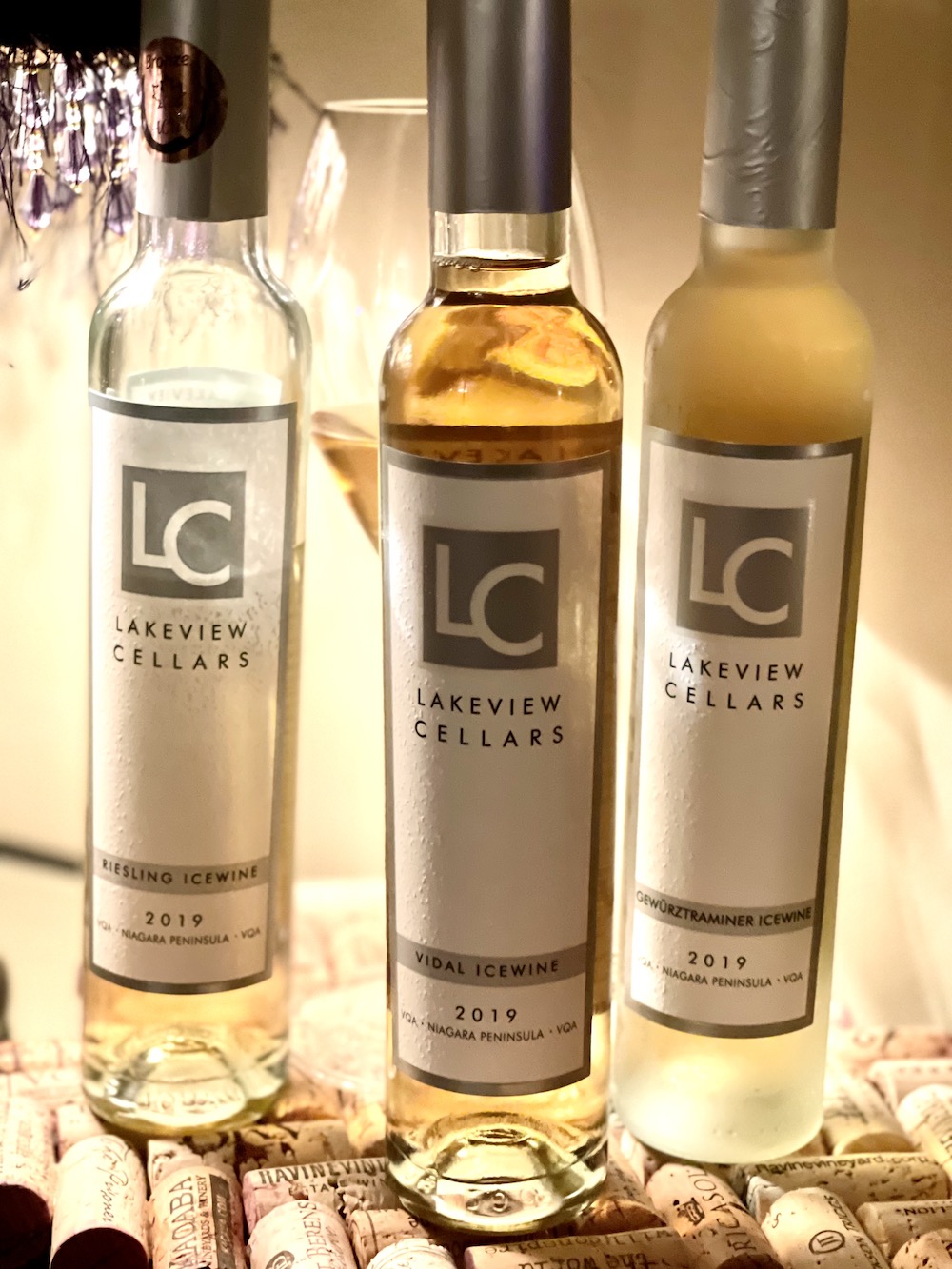
Lakeview Cellars Riesling Icewine 2019 ($35 for 200 mL, 91 points) – This shows a rich golden colour in the glass with a nose of peach preserve, poached pear, baked apple, sweet nectarine and candied lime. It has lovely texture and verve on the palate with notes of peach pie, ginger, wild honey notes, mulled apples, tangerine and lime zest with a fairly fresh finish.
Lakeview Cellars Vidal Icewine 2019 ($23 for 200 mL, 89 points) — The nose shows baked apples, peach pie, tropical fruit punch and lime cordial. It’s thick with honey on the palate then ginger, caramel apple, apricot jam, marmalade and tropical fruits through a long, lush finish.
Lakeview Cellars Gewurztraminer Icewine 2019 ($40 for 200 mL, 92 points) — Such a unique nose of ripe grapefruit, lychee nuts, spice, apricot tart and nutmeg/ginger notes. It’s thick and unctuous on the palate with an array of compoted apricot jam, mango, spice, marzipan, tropical notes, peach preserve and juicy acidity on the finish. Excellent job here keeping it somewhat balanced.
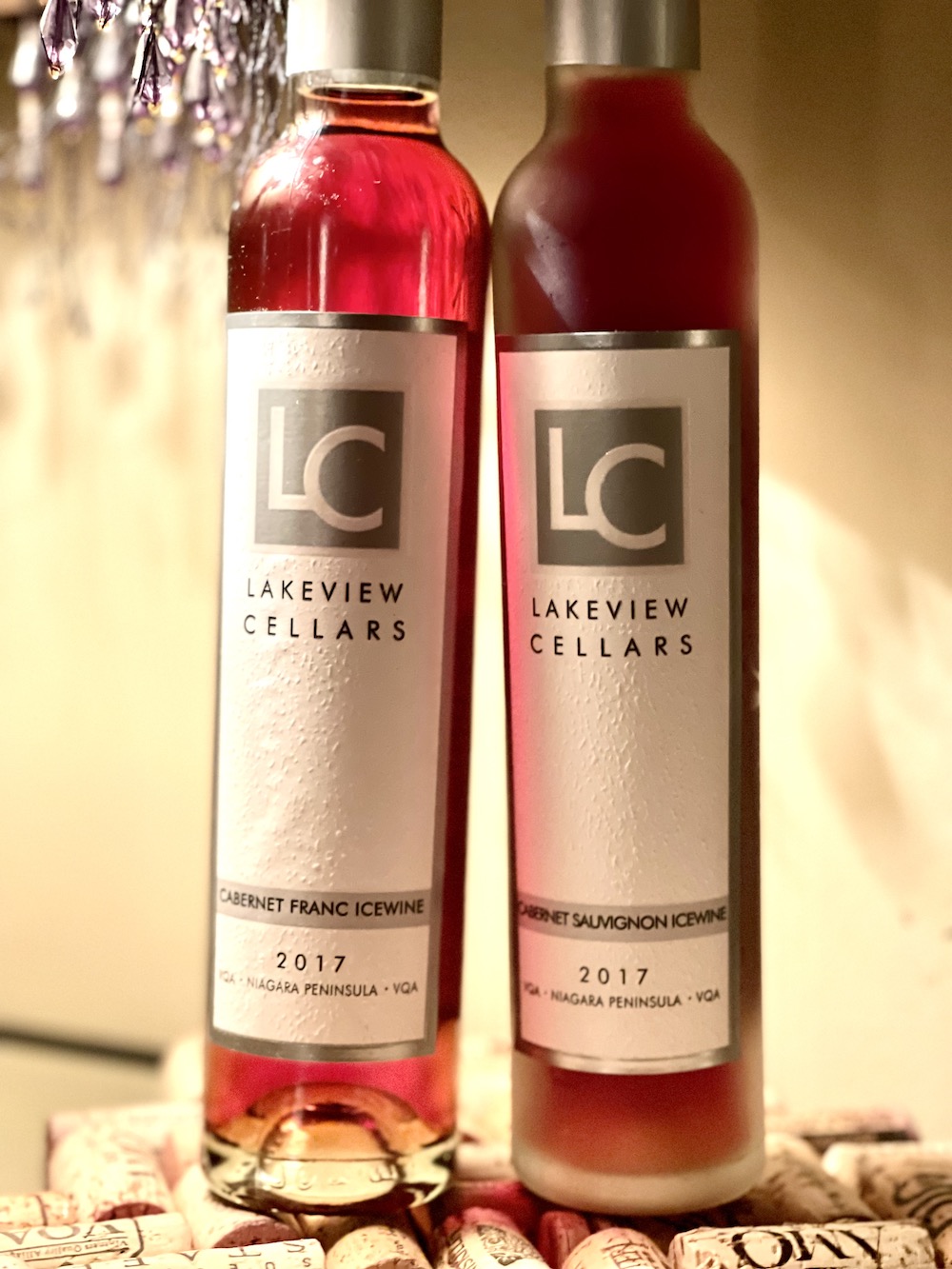
Lakeview Cellars Cabernet Sauvignon Icewine 2017 ($40 for 200 mL, 93 points) — Deep, rich burgundy colour in the glass with a bold nose of ripe black cherries, black currant jam, cherry kirsch and raspberry tart. It’s luxurious, complex and rich on the palate with velvety texture, compoted dark berries, sweet cherry/raspberry jam and a long, lush finish buoyed by mouth-watering acidity.
Lakeview Cellars Cabernet Franc Icewine 2017 ($30 for 200 mL, 91 points) — Shows a much lighter colour in the glass than the Cab Sauv and a more restrained nose of brambly red berries, sweet herbs and crunchy, sweet cranberries. On the palate, it’s loaded with sweet black cherries, grandma’s raspberry jam, some earthy/herbaceous notes and a long finish.
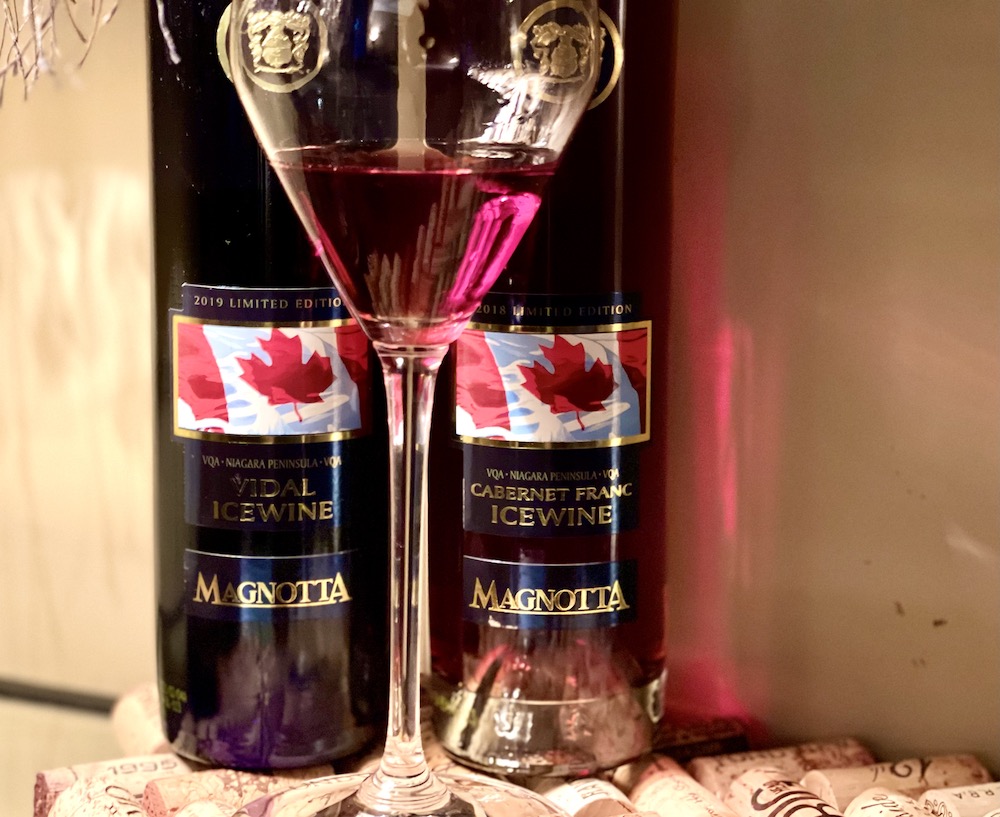
Magnotta Limited Edition Vidal Icewine 2019 ($31 for 375 mL, 90 points) — It shows a deep golden colour in the glass with a nose of sweet tropical mango, pineapple, peach pie and apricot jam. It’s honey sweet on the palate followed by tropical fruit cocktail, mulled peaches and marmalade with a zesty zing on the finish.
Magnotta Limited Edition Cabernet Franc Icewine 2019 ($45 for 375 mL, 93 points) — This red icewine shows a deep burgundy colour in the glass with a nose sweet and brambly black raspberries, ripe cherries, cranberries and black currant jam. It holds true to the variety on the palate with sweet, but balanced, notes of jammy red berries, strawberry/rhubarb pie, crème de cassis and a long, luscious finish. Can cellar 7+ years.
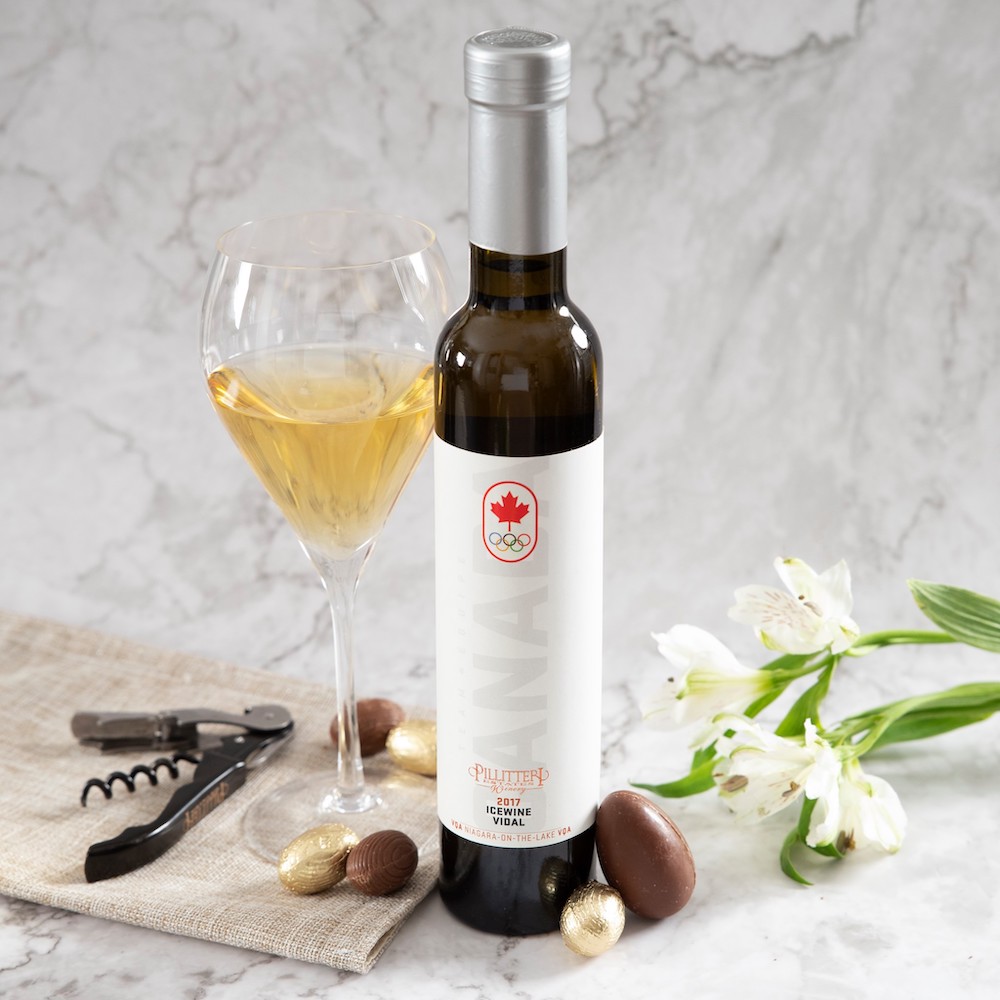
Pillitteri Team Canada Vidal Icewine 2017 ($30 for 200 mL, 92 points) — This shows a complex nose of mulled peach, honeycomb, canned pineapple slices, candied citrus and spiced apples. It’s rich and unctuous on the palate with peach pie, tropical notes, spice, candy apple, poached pear and a long, lifted, luxurious finish. Good aging potential here.
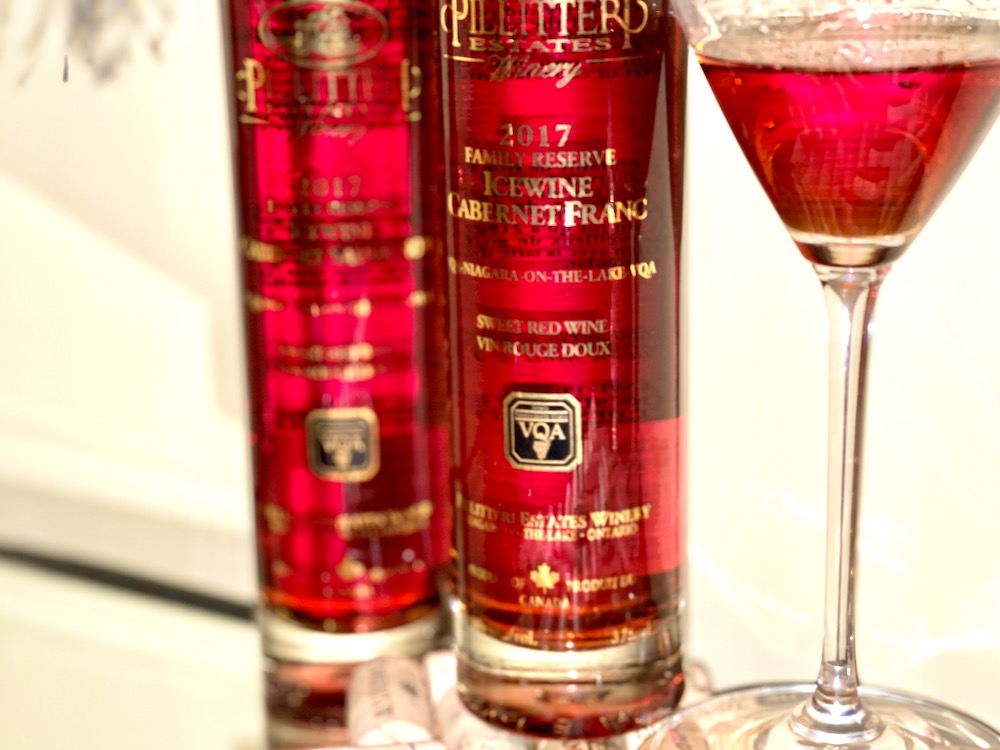
Pillitteri Family Reserve Cabernet Franc Icewine 2017 ($70 for 200 mL, 94 points) — Such a gorgeous icewine with a nose of confected strawberries, mulled raspberries, red currant jam, sweet herbs and subtle spice notes. It’s thick and juicy on the palate with candied red berries, compoted blackberries, crème de cassis, savoury spice notes and a luxurious texture with length and verve thought the finish. Would love to see this icewine after 10 years or more in the cellar.
Pillitteri Family Reserve Cabernet Sauvignon Icewine 2017 ($70 for 375 mL, 93 points) — Just like the dry version of itself, this exotic sweetie is shy at first until it begins opening up to reveal a riot of cherry kirsch, crushed and sweet wild blueberries, jammy strawberries, cassis and plum pudding. It’s a more elegant style on the palate, honey sweet, yes, but not cloying with a ripe and compoted mix of dark cherries, cassis and plums all carried on a vibrant and luxurious finish. Huge aging potential here, say 15+ years.
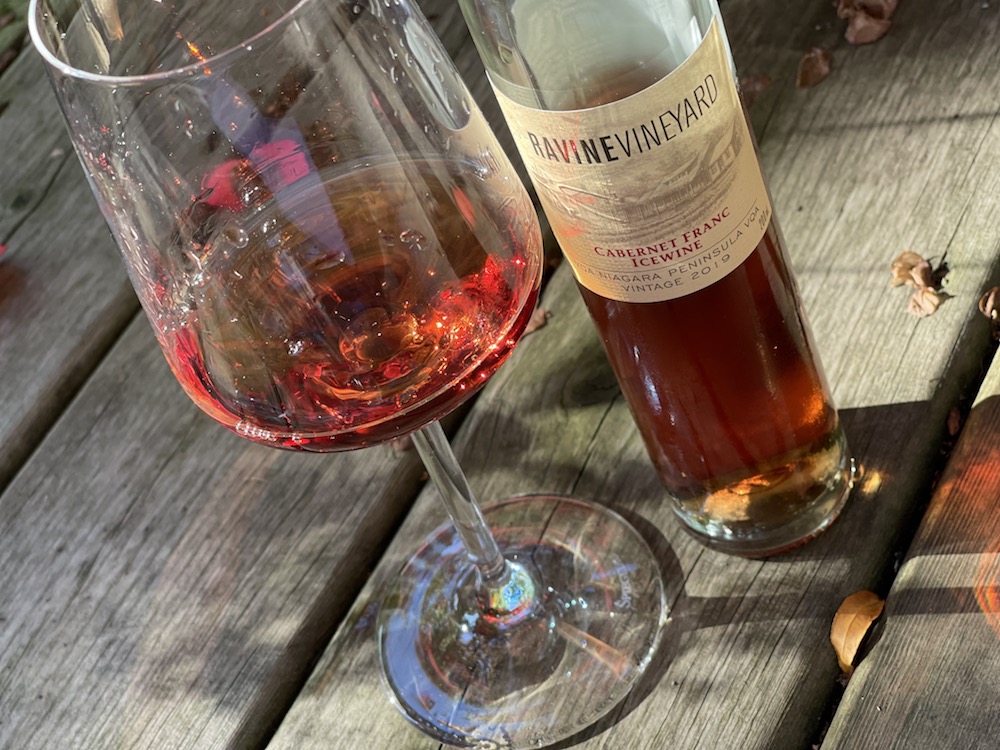
Ravine Cabernet Franc Icewine 2019 ($45 for 200 mL, 94 points) — This exquisite Cab Franc icewine benefits from a few months of barrel aging in oak. It shows a deep and rich bronze colour in the glass and an enticing and decadent nose of cherry kirsch, jammy strawberries and grandma’s raspberry jam with buckwheat honey, sweet herbs and just a whiff of mocha. It’s silky and unctuous on the palate with candied red berries, wild honey and dried herbs in a layered and textured style that is gifted with balancing acidity on a long, luxurious finish. An amazing icewine to lay down for 10+ years, if you can.
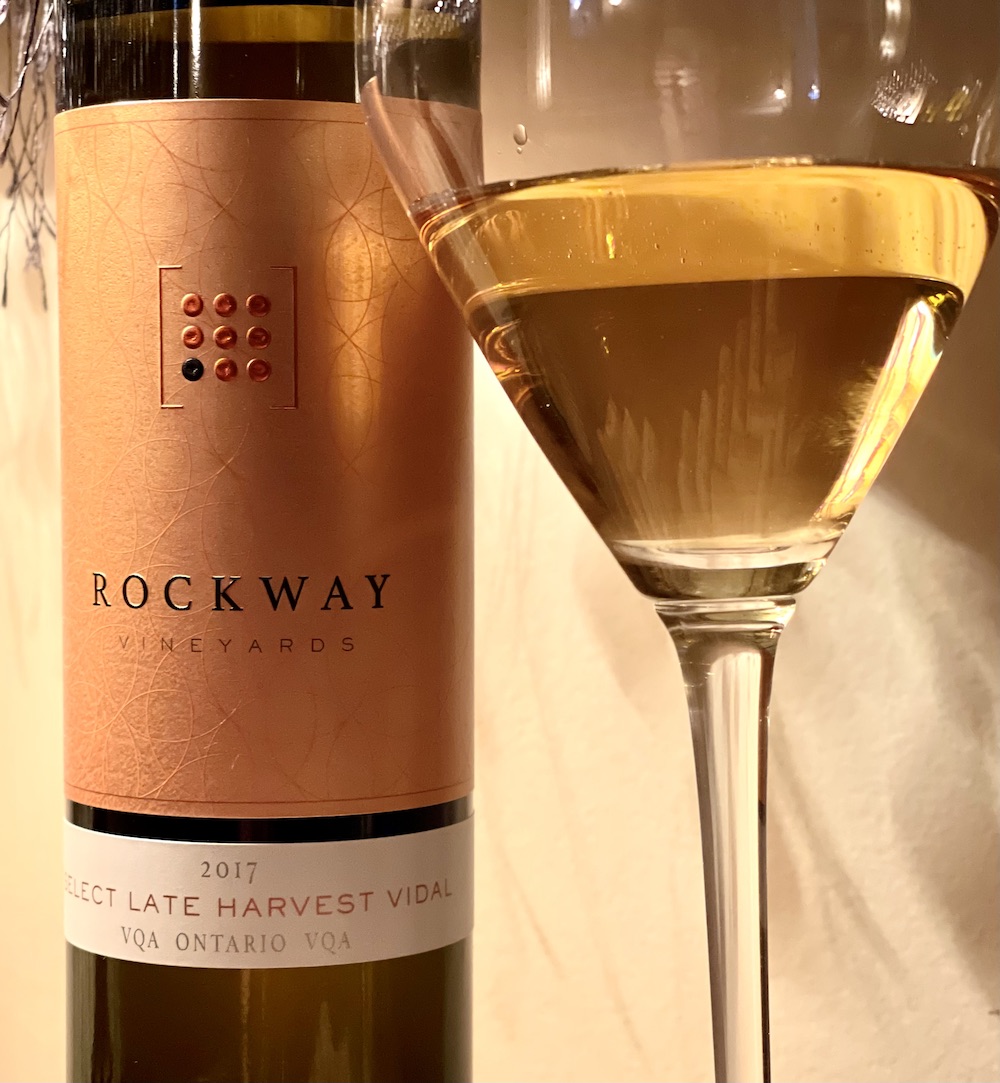
Rockway Vineyards Select Late Harvest Vidal 2017 ($29 for 375 mL, 90 points) — Select Late Harvest wines are not technically “icewines”, but the grapes are harvested after the regular harvest and the sweetness of the grapes used increases from Late Harvest through Select Late Harvest to Special Select Late Harvest. This sweetie from Rockway was finished at 117 g/l of residual sugar and shows a shimmering golden colour in the glass with a nose of mulled apples with caramel, compoted tropical fruits, peach pie and candied citrus notes. It’s plump and juicy on the palate with a rich broth of warm apple pie, mature peach preserve, ripe and sweet tropical fruits, brown honey notes and medium+ acidity on the finish. A good alternative to icewine, usually at a more favourable price point.
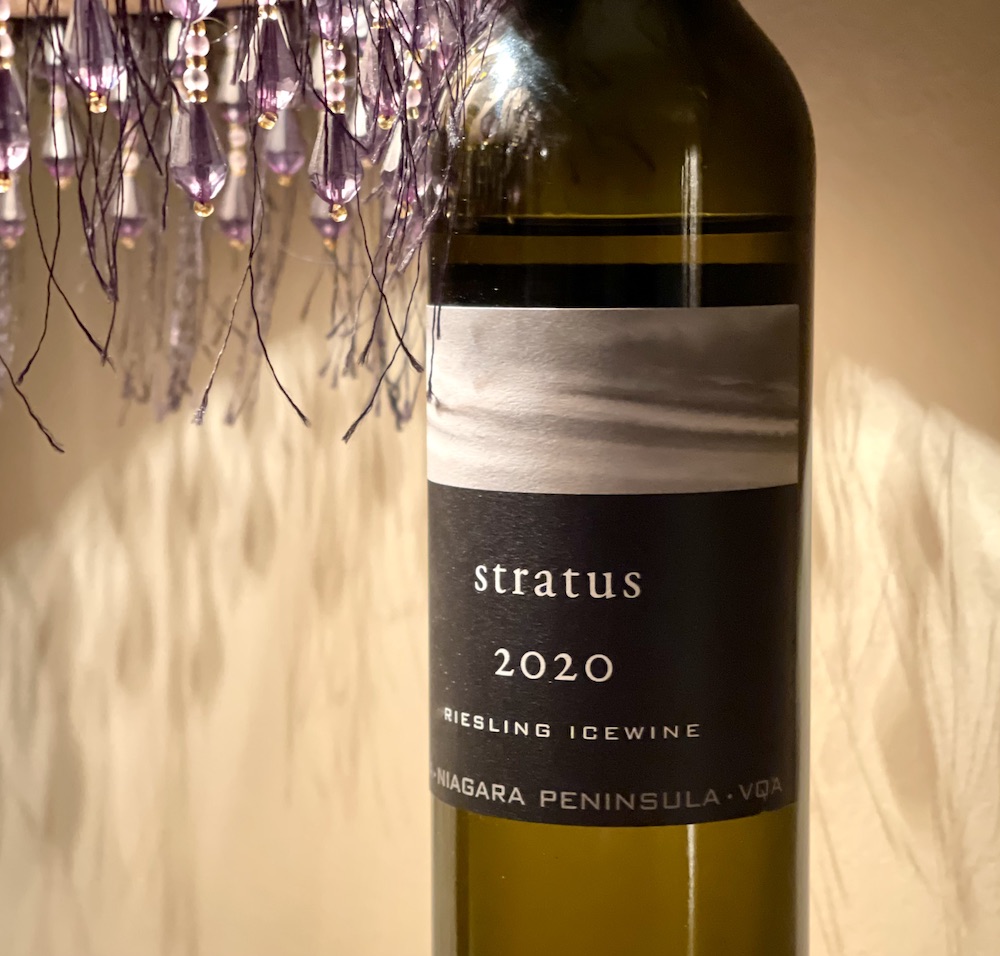
Stratus Riesling Icewine 2020 ($44 for 375 mL, 92 points) — Such a unique and exciting style of Riesling icewine with a nose of lemon tart, chamomile, candied lime, mature apples, apricot compote and freshness. It’s layered and textured on the palate and brimming with spiced apples, lemon meringue pie, compoted quince notes, honeycomb and enough acidity on the finish to keep this dancing a joyful jig.
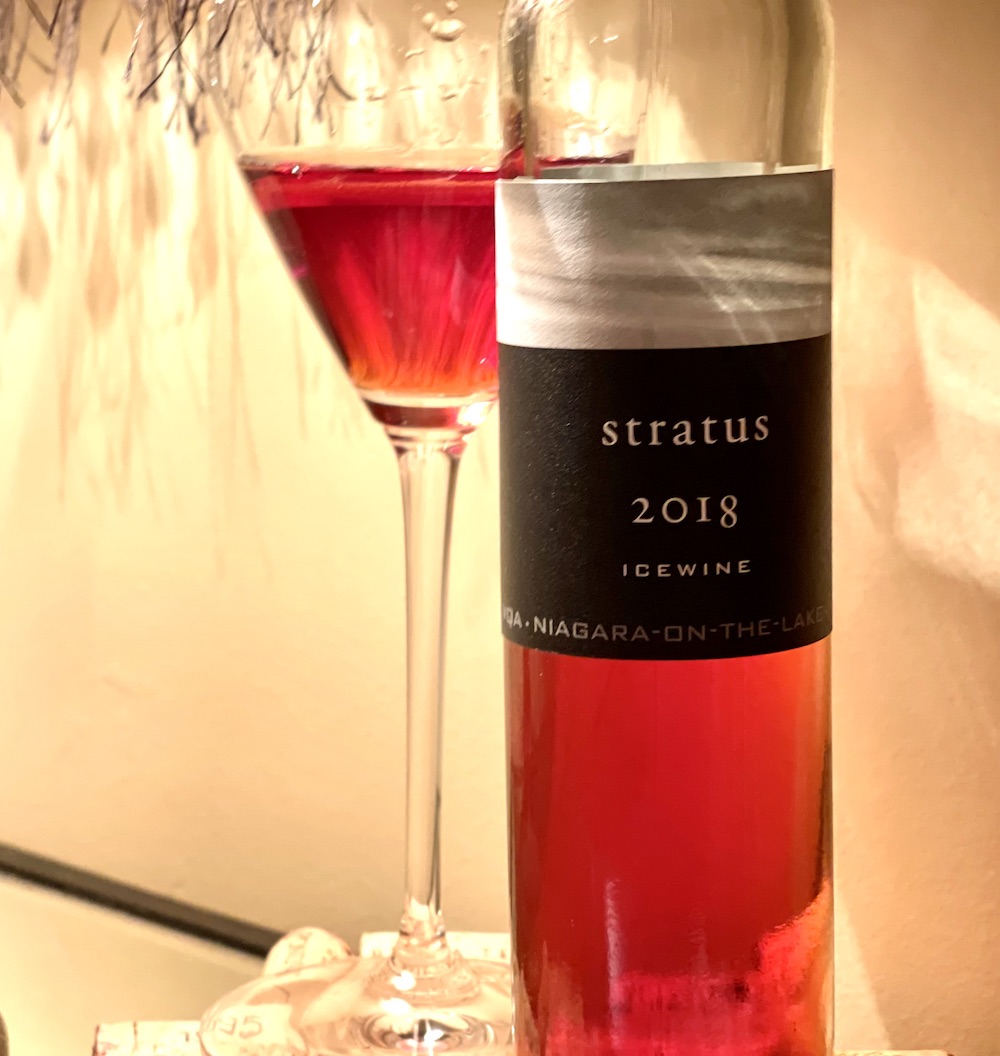
Stratus Red Icewine 2018 ($45 for 200 mL, 93 points) — Quite the imaginative blend of 46% Petit Verdot, 38% Cabernet Sauvignon and 16% Cabernet Franc that I’m 100% certain is unique in the world. There is a lot going on here with a nose of compoted red berries, some brambly influences, crème de cassis, sweet herbs and blueberry pie. It’s lush and layered with earthy and sweet red berry tart, anise and black currants preserves, luxurious texture, length and fairly decent acidity holding it all together. It’s on the lower end of residual sugar and is finished at 12.9% abv. A great candidate for the cellar.
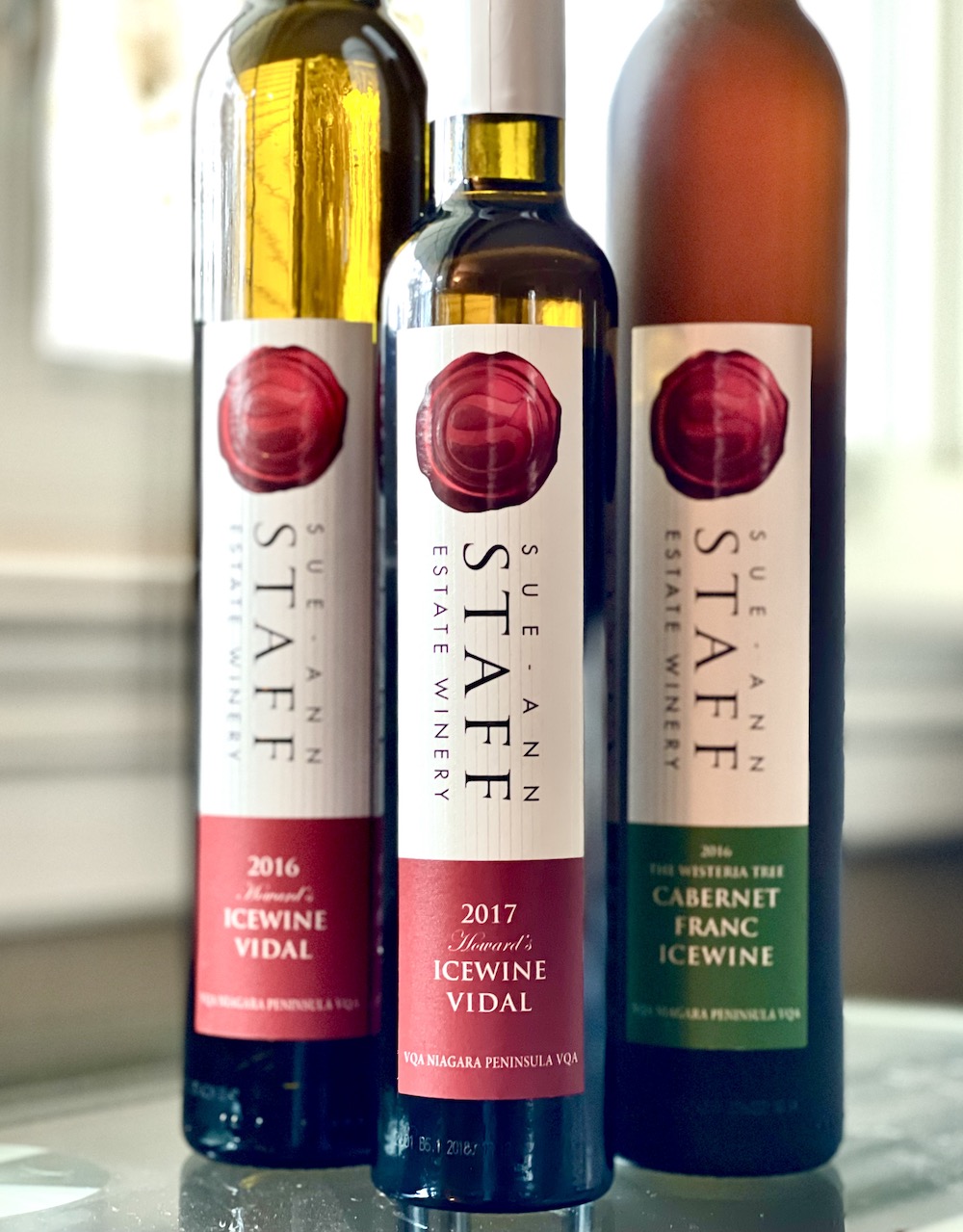
Sue-Ann Staff Howard’s Icewine Vidal 2016 and 2017 ($40 for 375 mL, 92 points) — This lovely, aged icewine from the spectacular 2016 vintage shows a deep golden colour in the glass and, my, oh my, what a nose of alfalfa honey, marmalade, compoted tropical fruits, citrus peel, peach preserve and ginger spice. It’s showing some lovely age on the palate yet maintains freshness in the melange of tropical compoted fruits, peach tart, brown sugar and vanilla bean in a lush and rich style that is exciting right now but can age another five years. The 2017 version is less evolved but shows a profile of ripe apricots, candied citrus and peach concentrate in a rich and honeyed style. Also delicious!
Sue-Ann Staff The Wisteria Tree Cabernet Franc Icewine 2016 ($99 for 375 mL, 94 points) — Another nicely aged icewine from the spectacular 2016 vintage. It’s starting to show some bricking around the edges but has an enticing nose of savoury and sweetly compoted red berries with some jammy black fruit notes and vanilla spice from oak influence. On the palate, there is some lovely freshness suggesting plenty of life left in this opulent and unique dark berry icewine. Look for sweet raspberry/cherry pie notes, strawberry tart, wild honey sweetness along a lush but lifted finish. Drinking beautifully now but will improve for another decade and will be absolutely stunning.
Icewine and food
Here are some simple ideas when matching icewine to food:
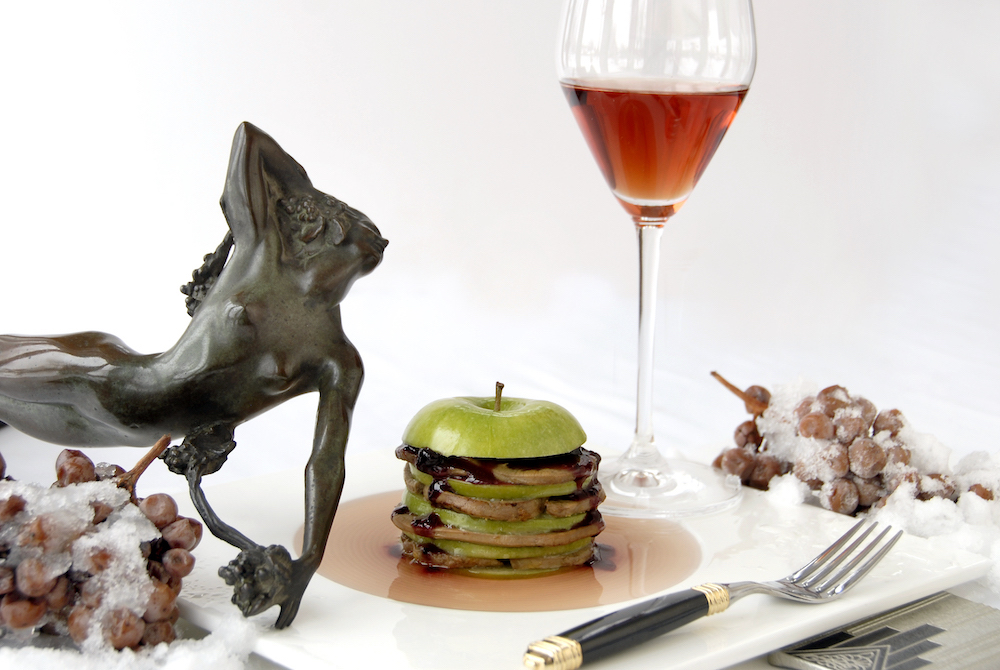
WITH CHEESE: Icewine and cheese is an incredible pairing experience at the beginning or end of the meal. Combine the strength, flavour and rich texture of icewine with cheeses such as blue veined, triple cream, goat cheese, washed rind cheeses, aged cheeses and salty parmesan.
WITH APPETIZERS: Icewine’s bold flavour is wonderful with a wide range of appetizers such as foie gras, fresh shucked oysters and savoury hors d’oeuvres.
WITH SALAD: Experiment with your favourite vinaigrette by replacing some of the vinegar with icewine (approximately half) — the natural sweetness tones down any sharp acidity in greens or other ingredients.
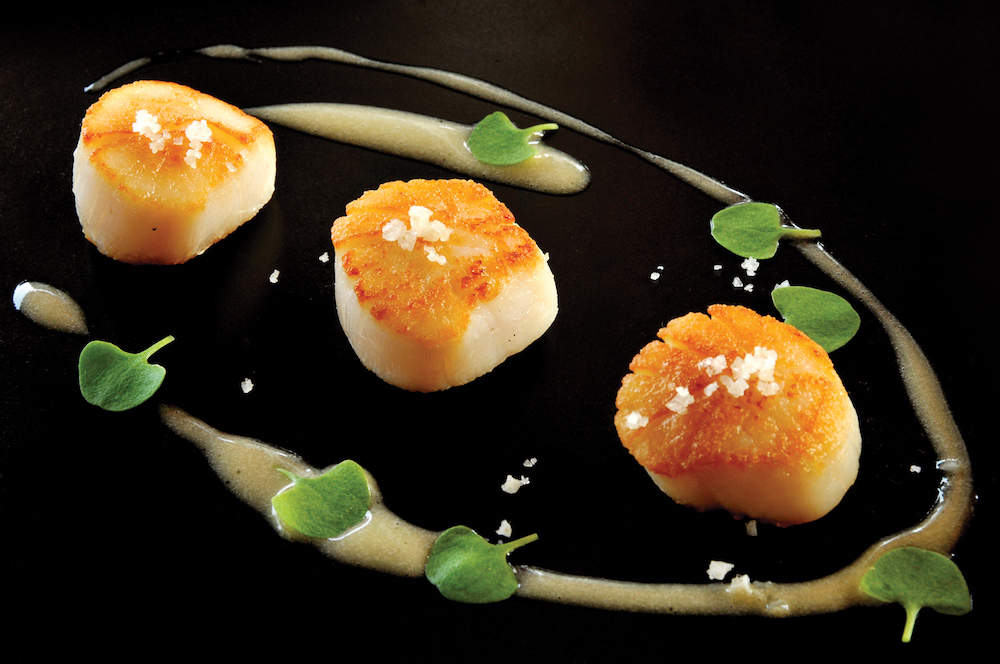
WITH THE MAIN COURSE: Icewine offers unique flavours to glazes, sauces and marinades. Riesling and Vidal icewine are an unforgettable pair with rich seafood like scallops, sushi and Thai food. Sparkling icewine is the most versatile and can pair with almost anything due to freshness and dryness perception caused by the bubbles from beginning to end of a meal and it stands up to the heat in spicy foods.
WITH DESSERT: Your dessert should never be sweeter than the icewine. For easy pairings remember white icewine is beautiful with fruit-based desserts while red icewine is exquisite with dark chocolate.


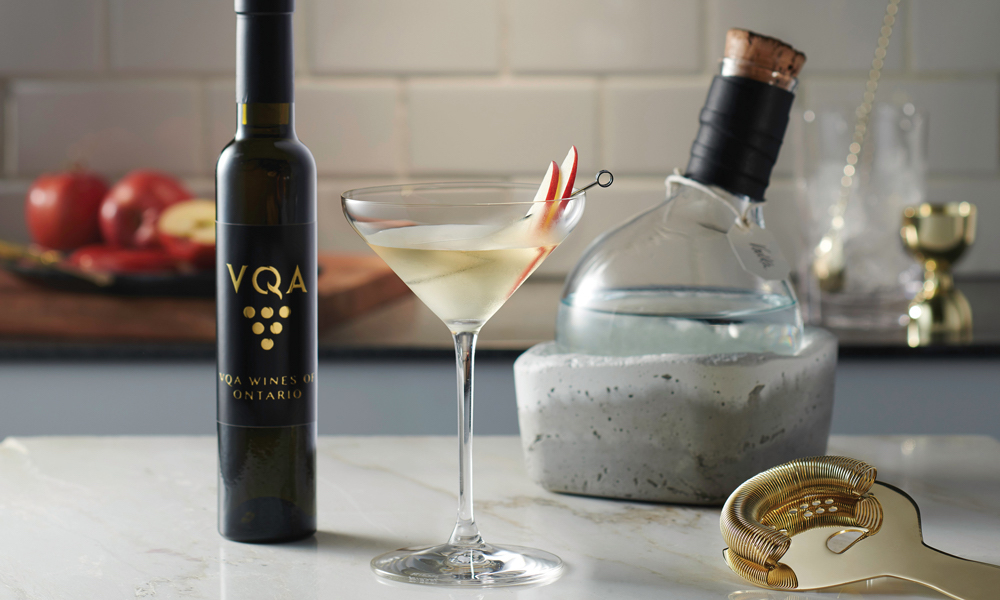






Comment here